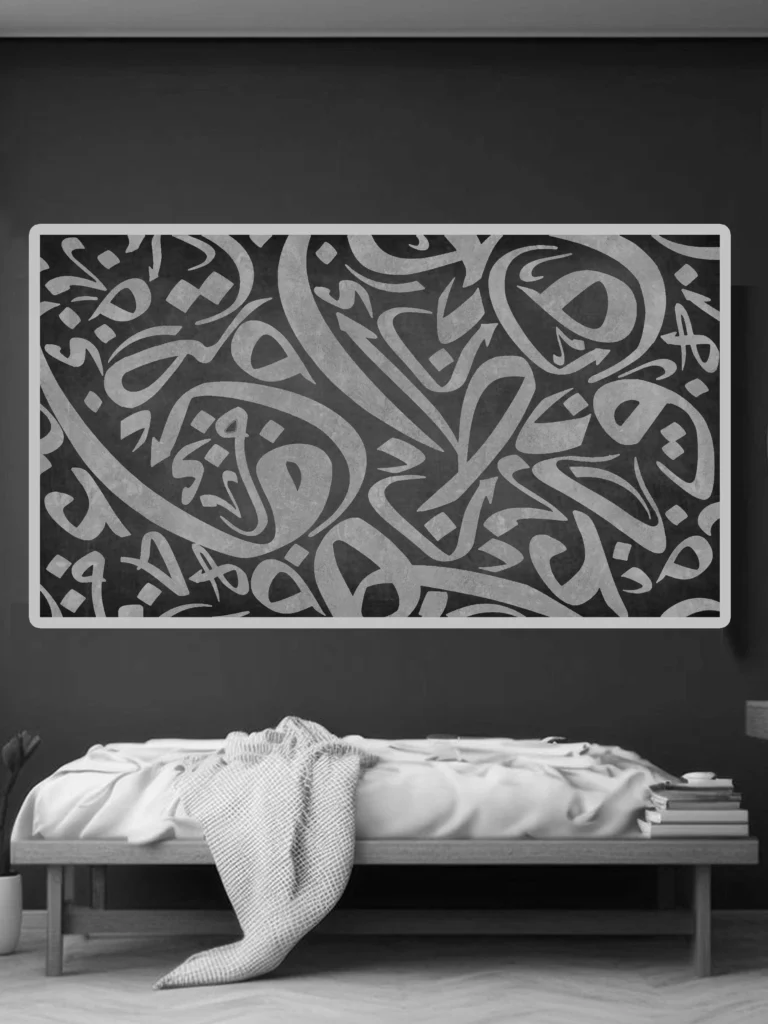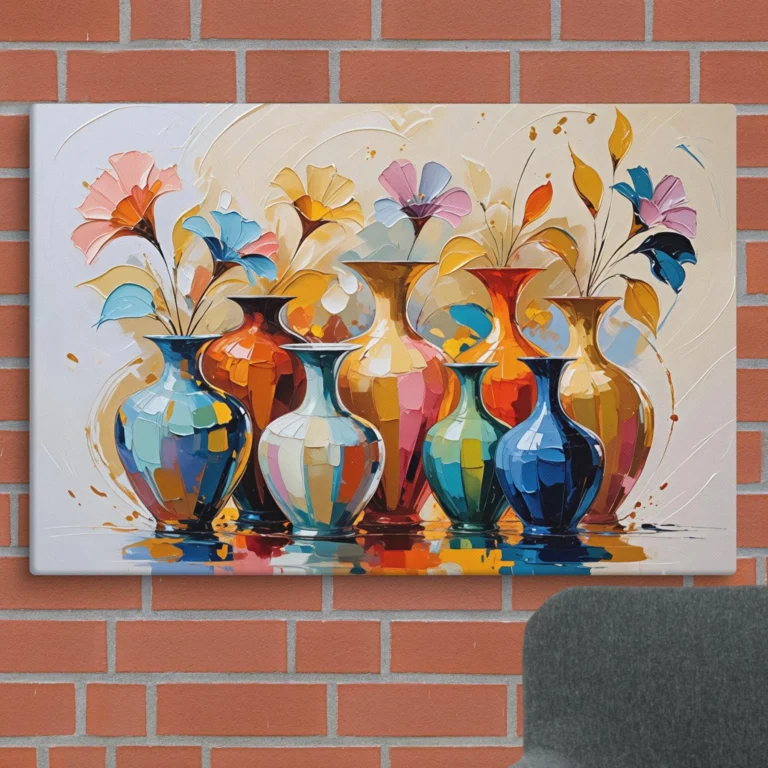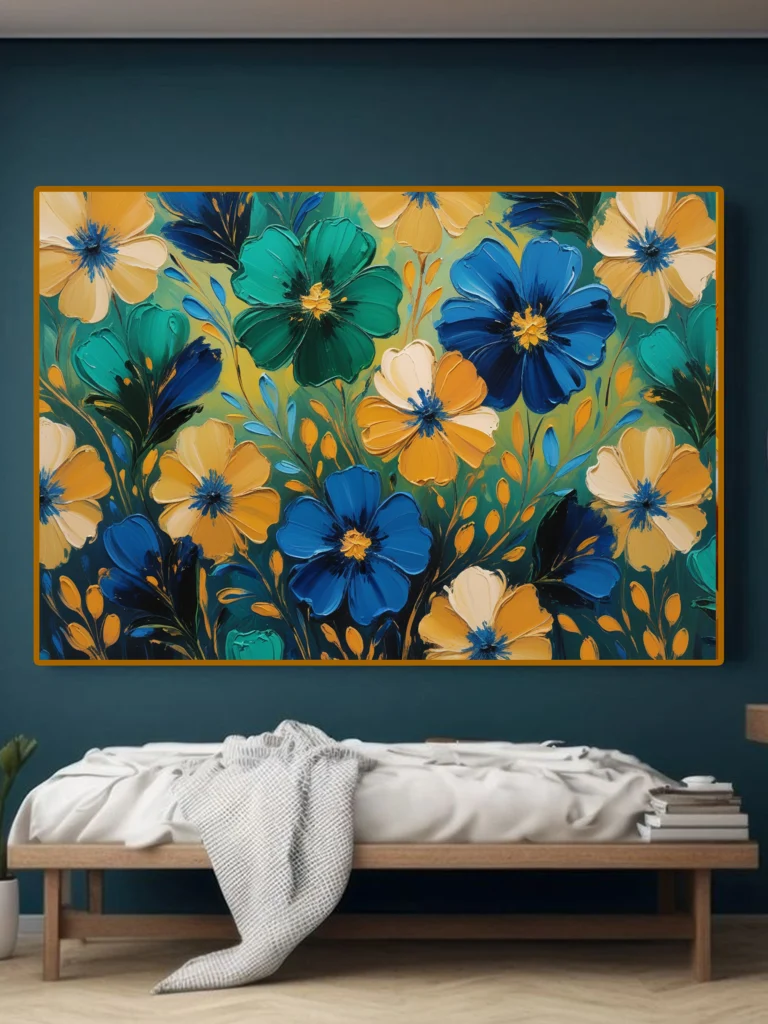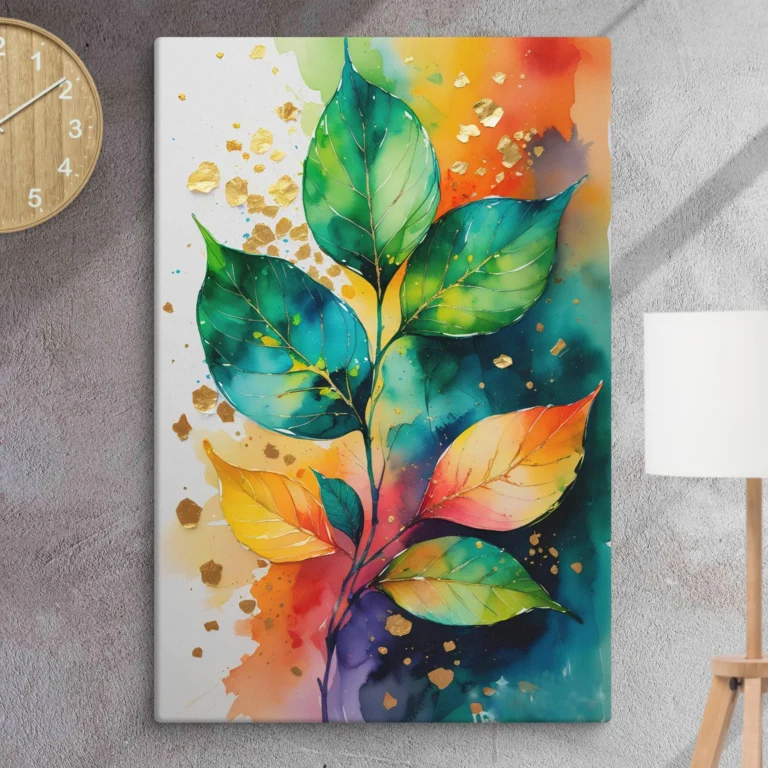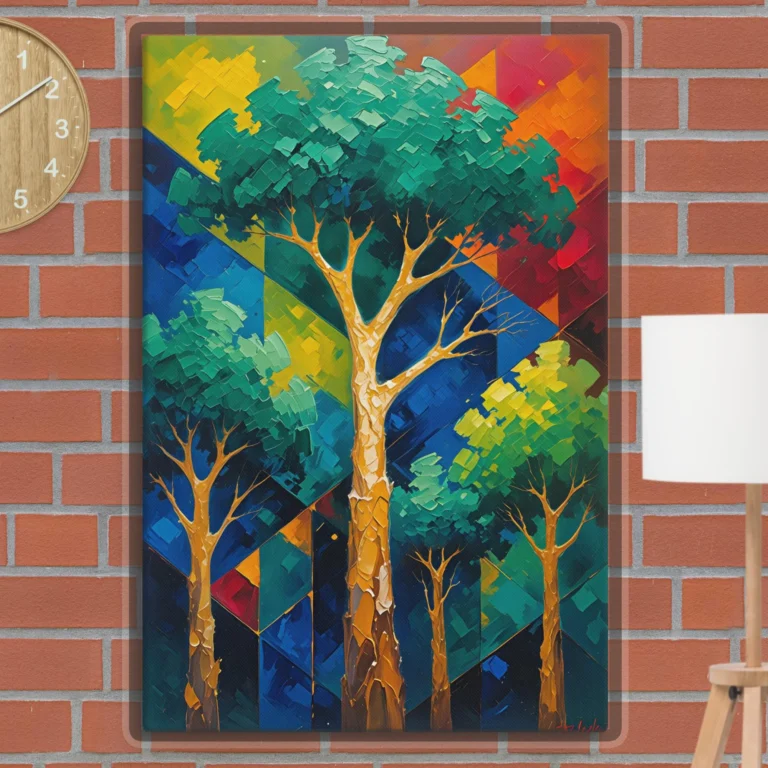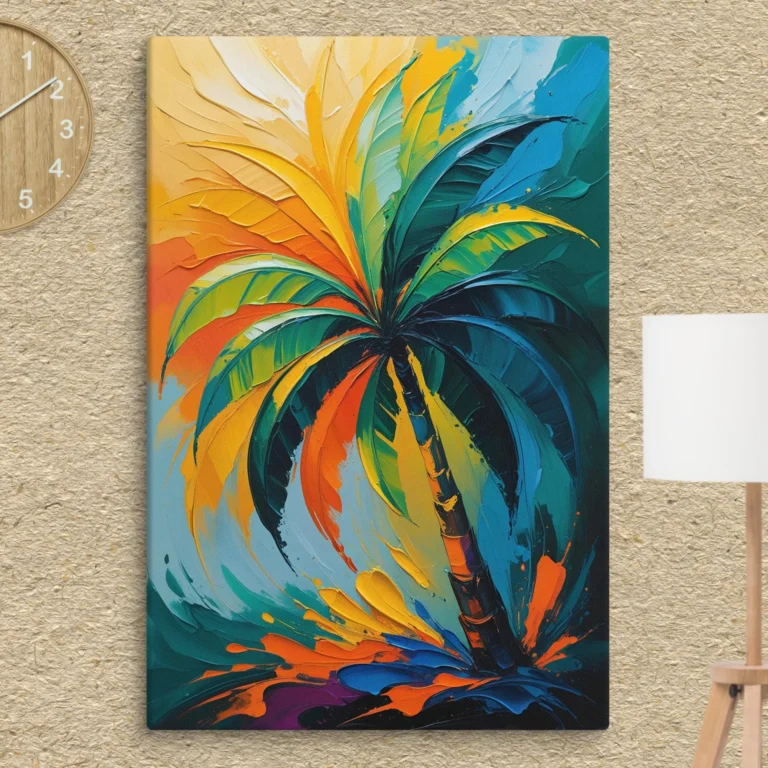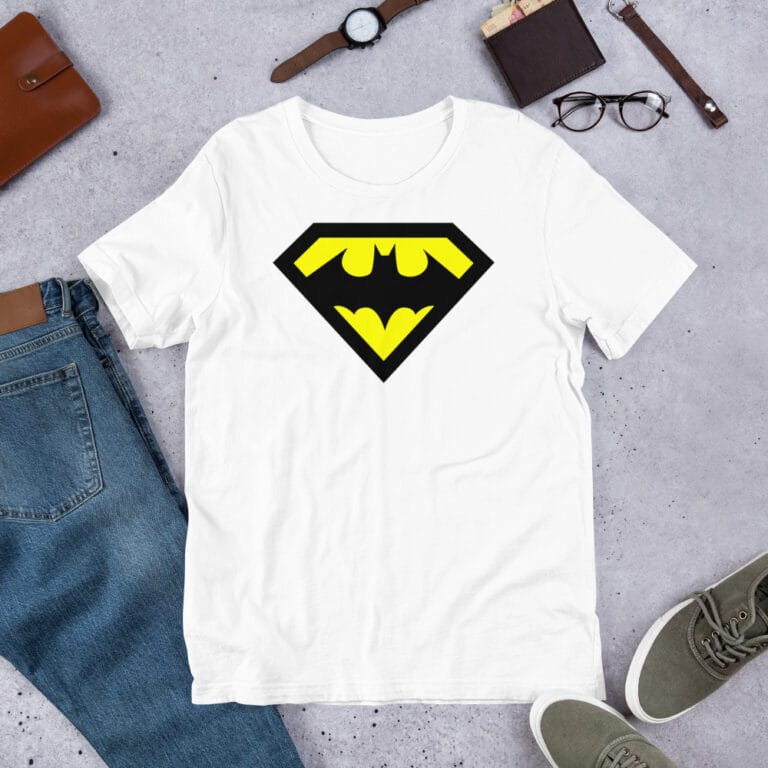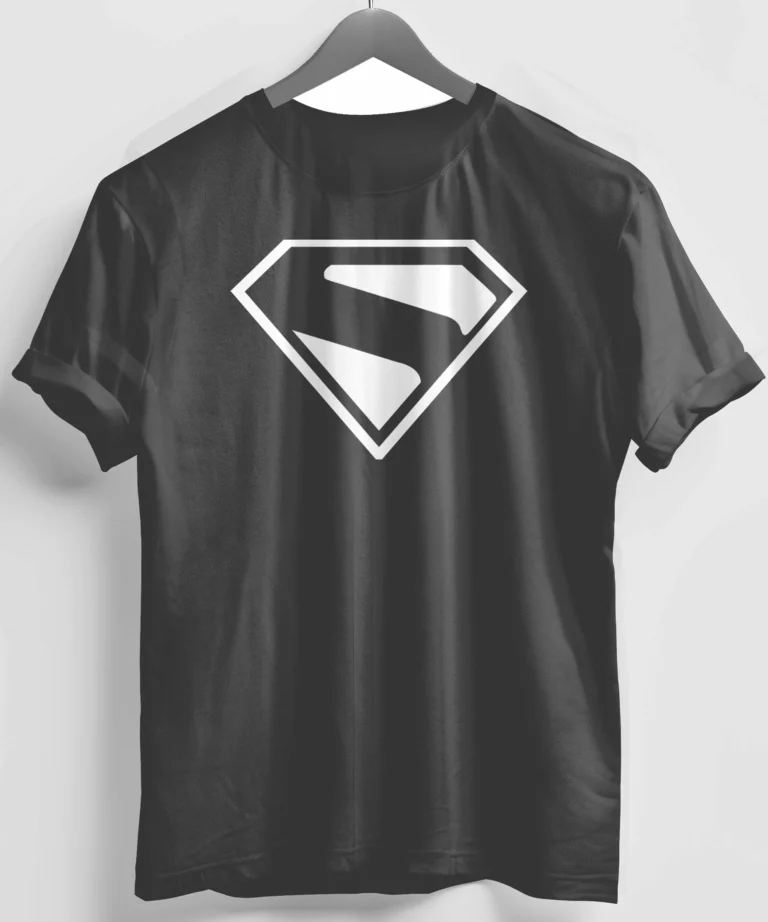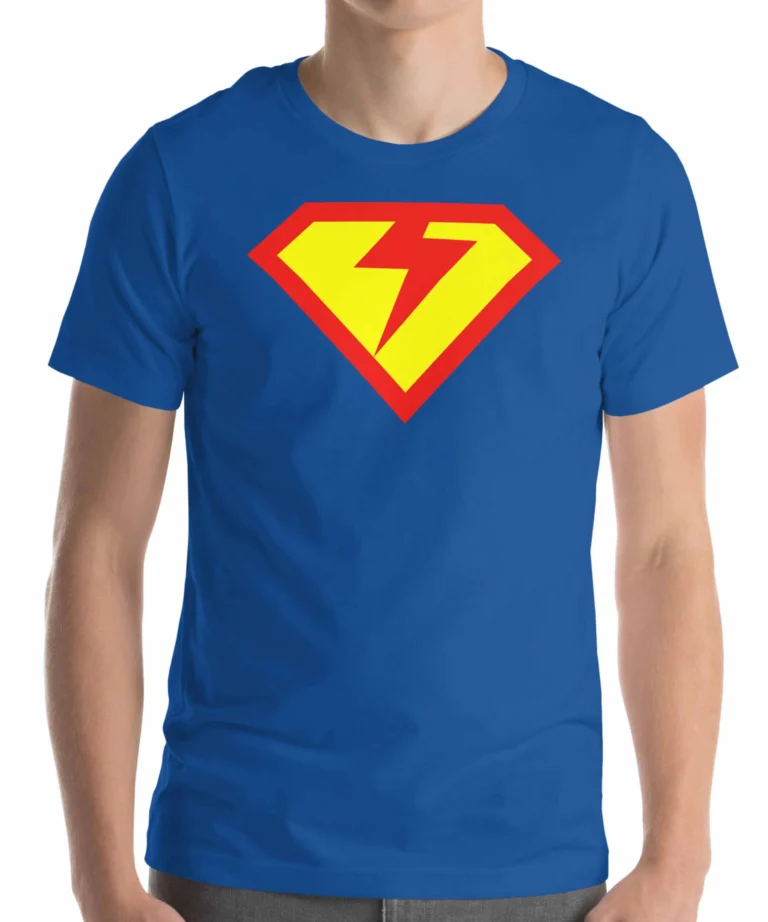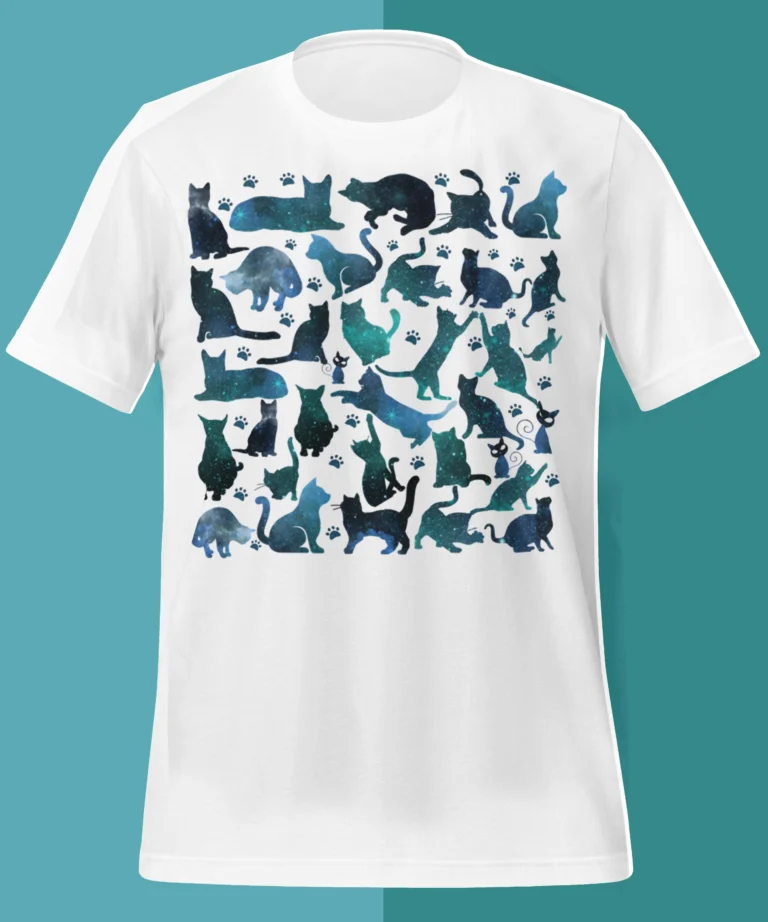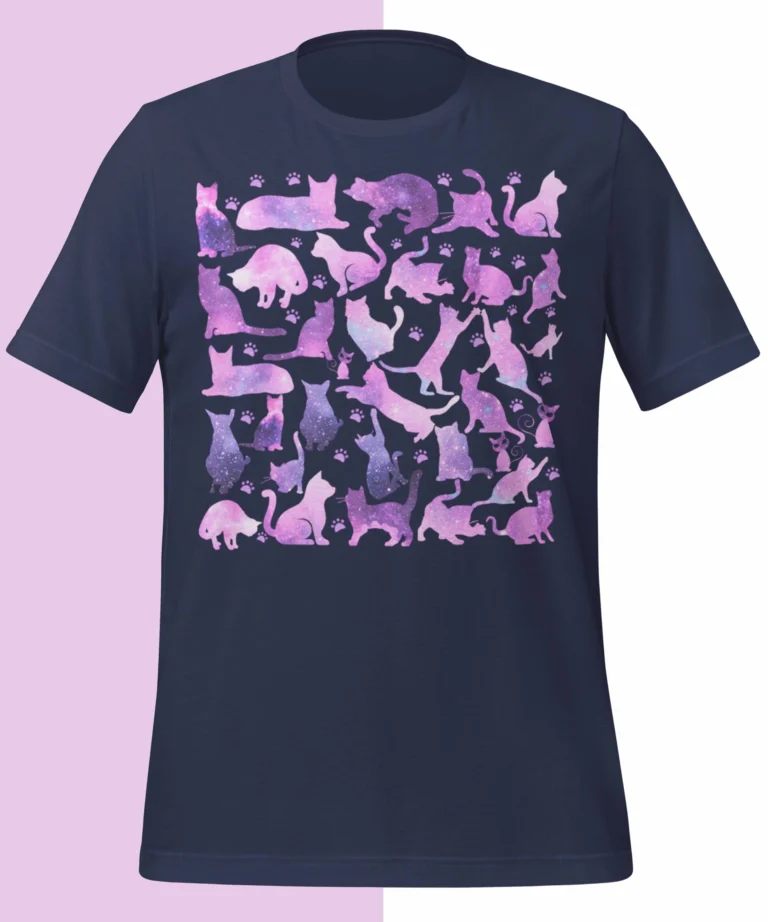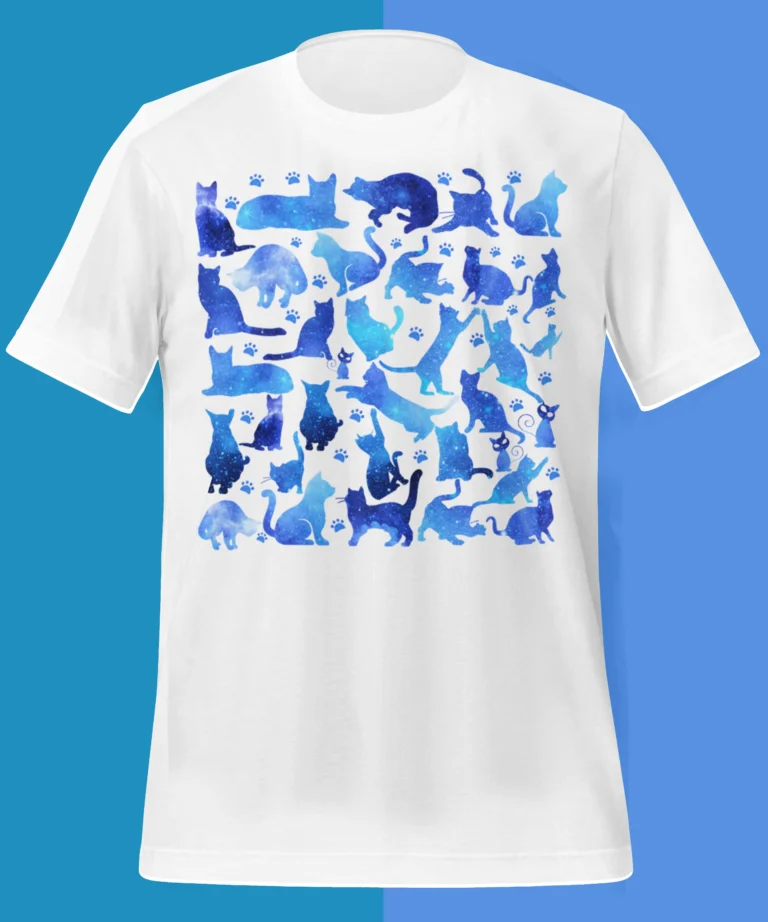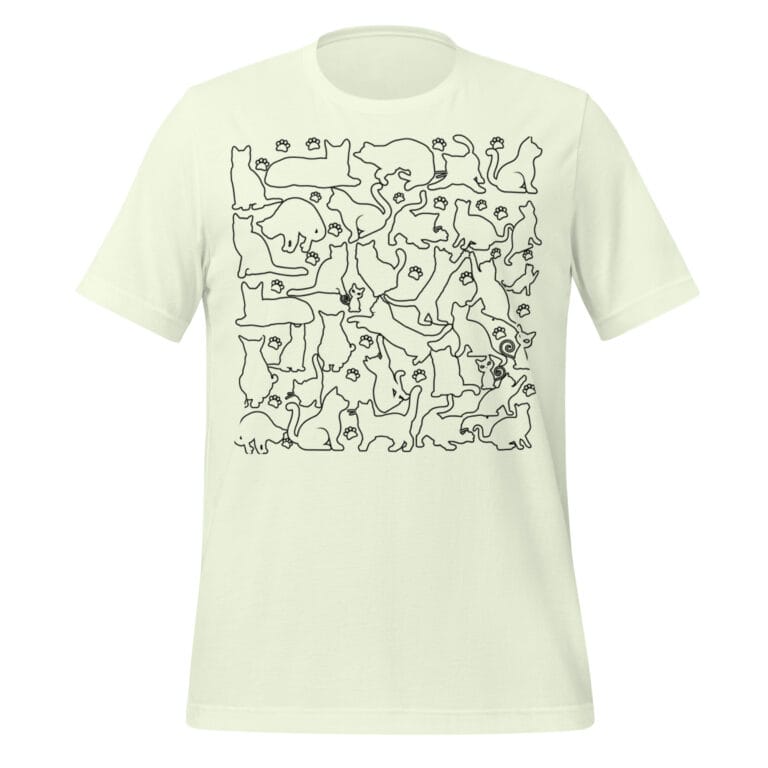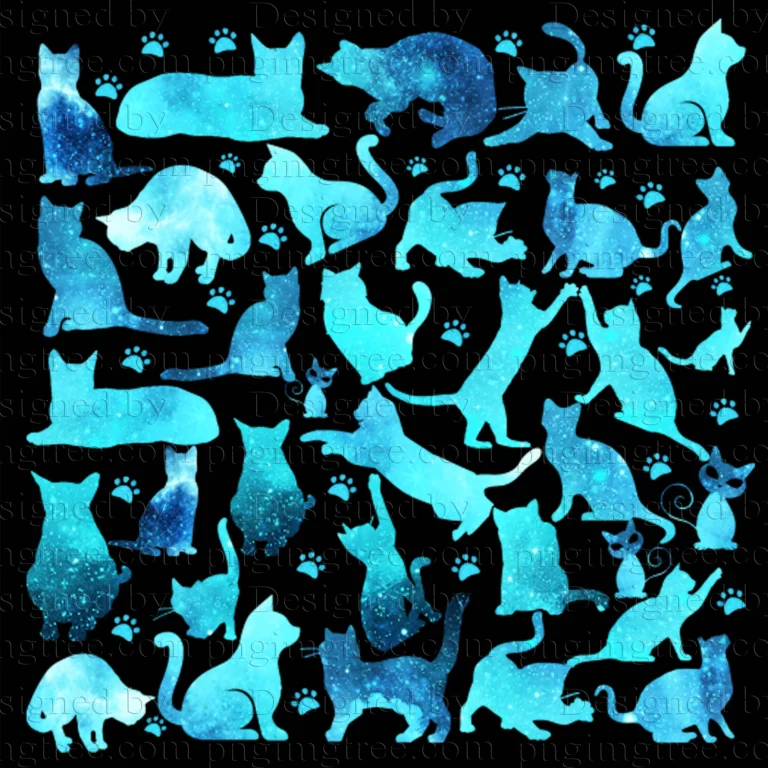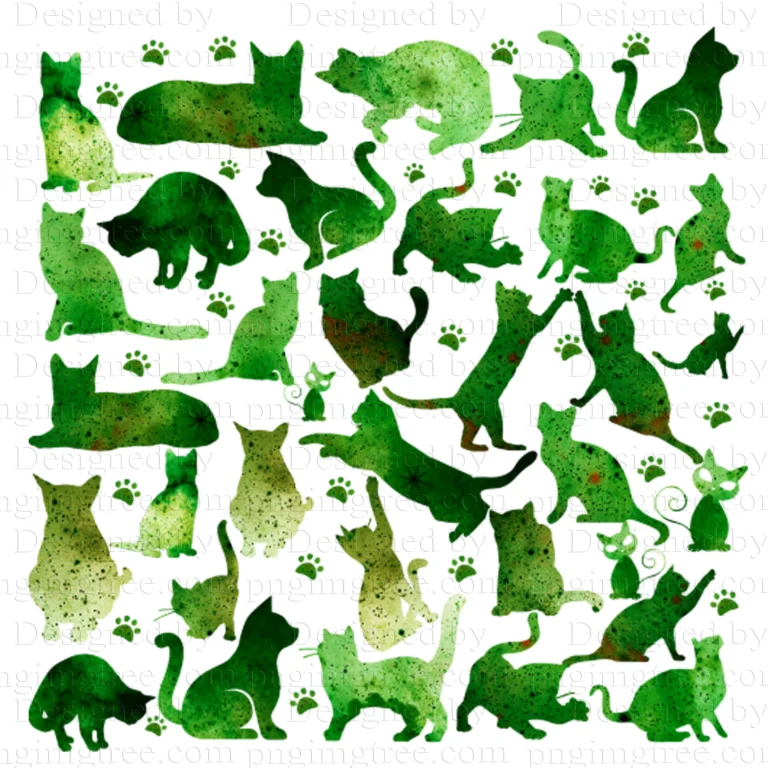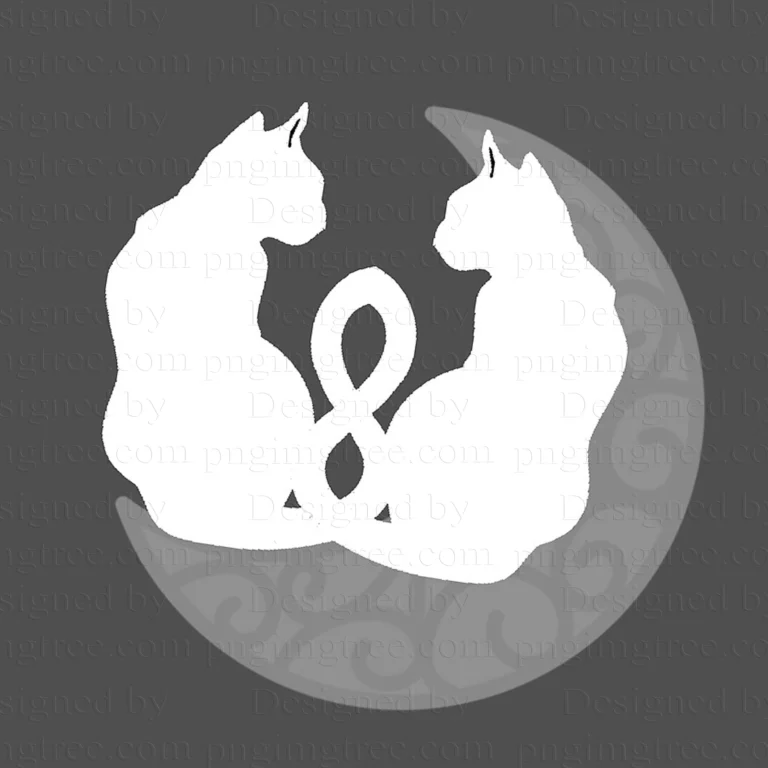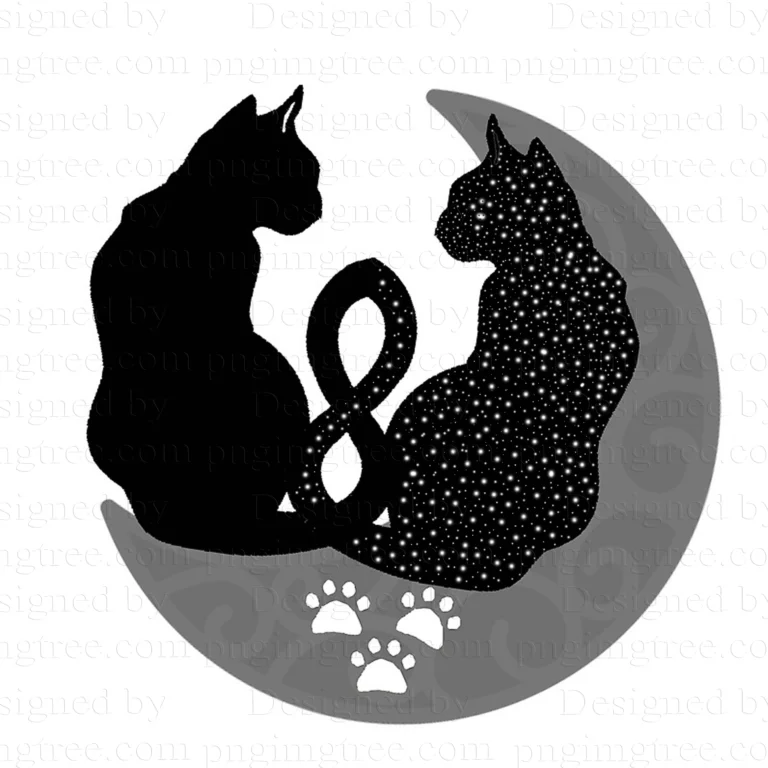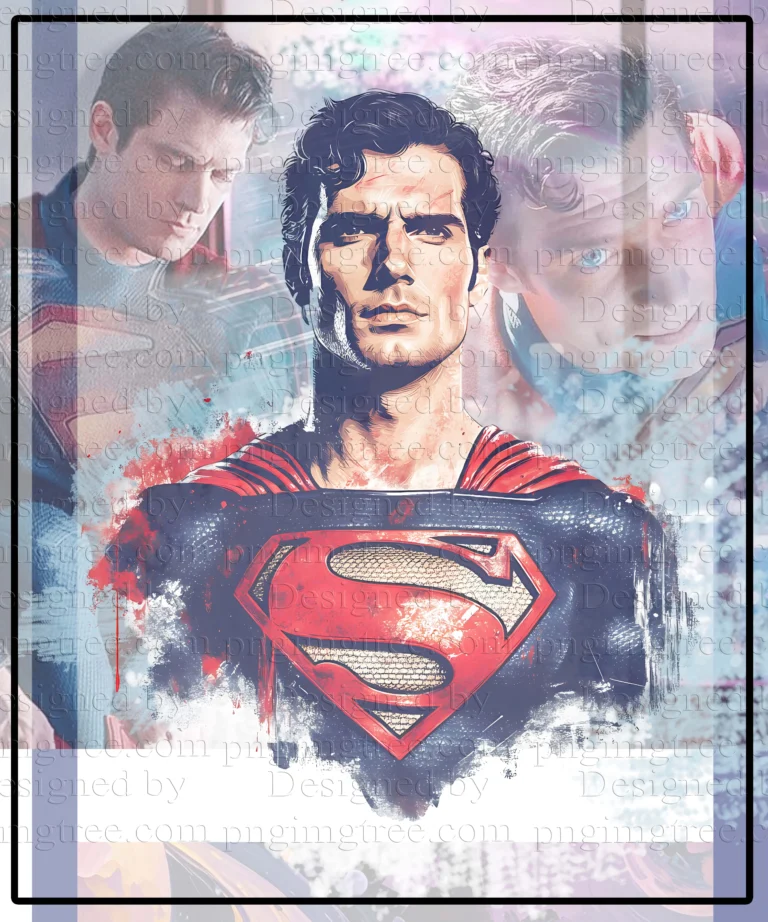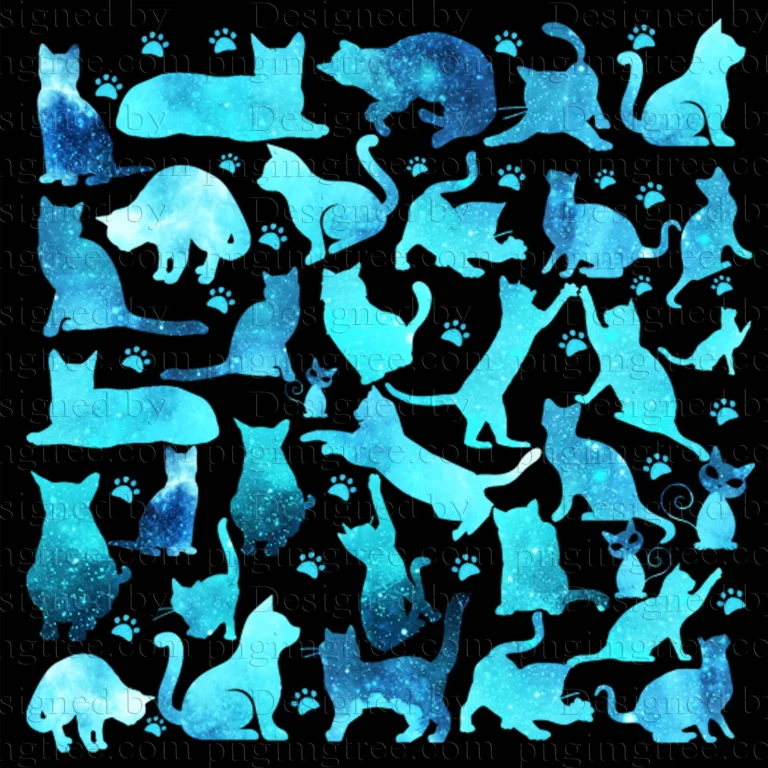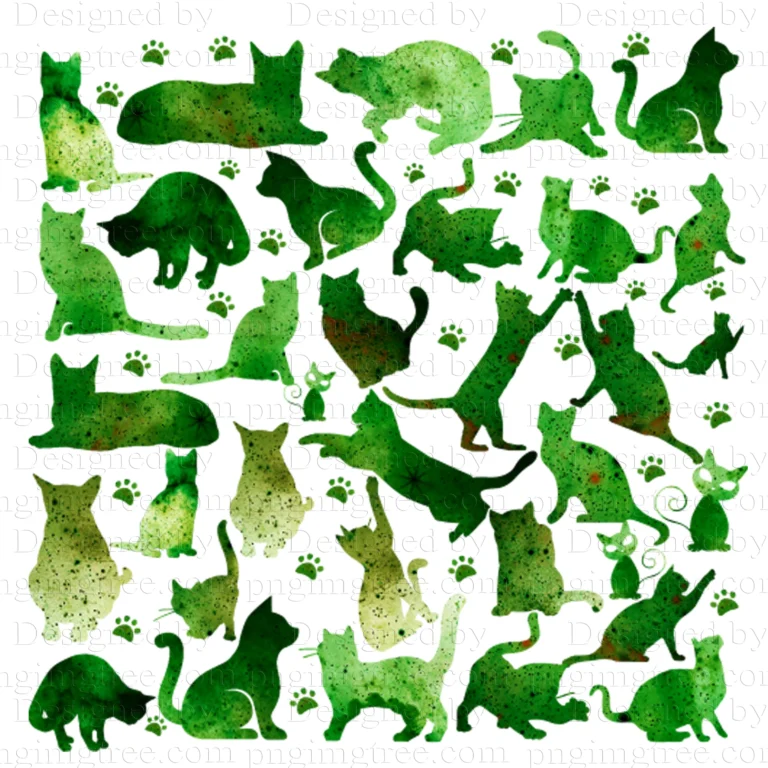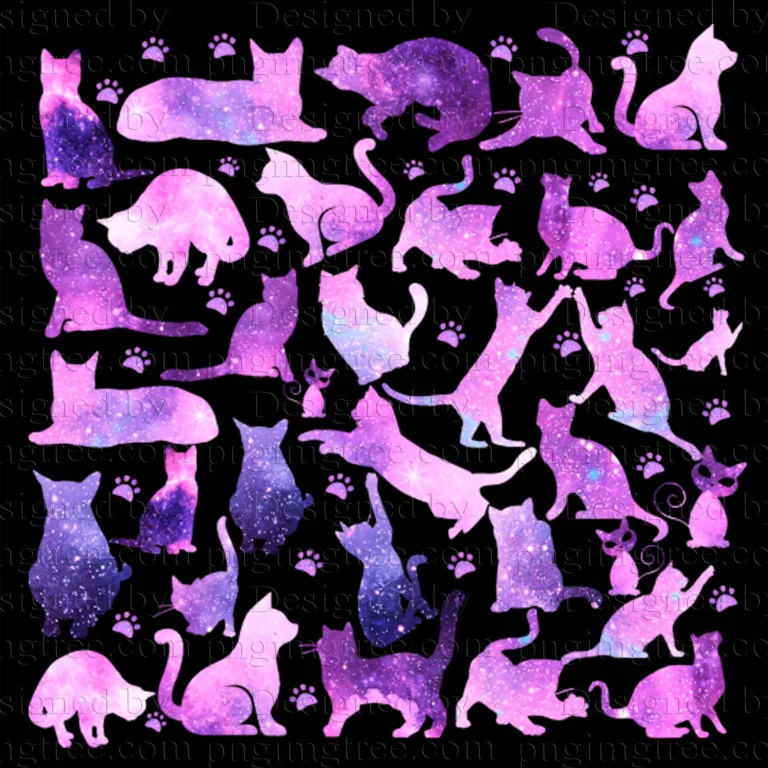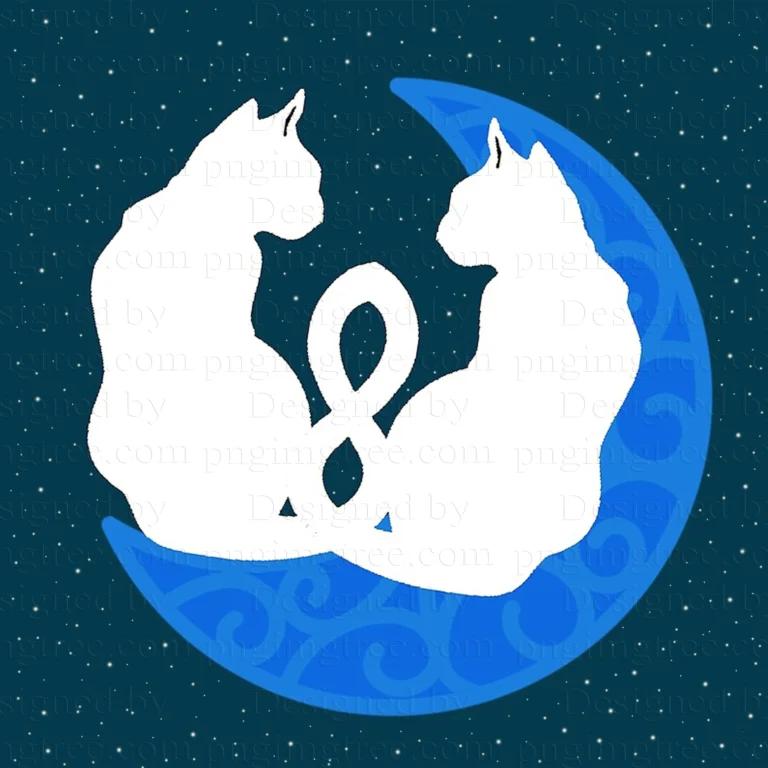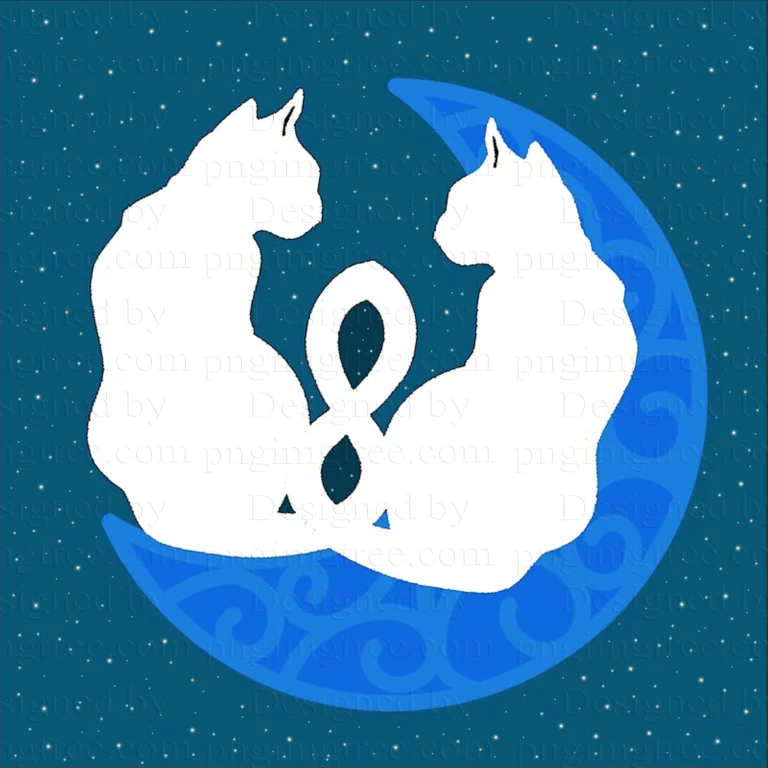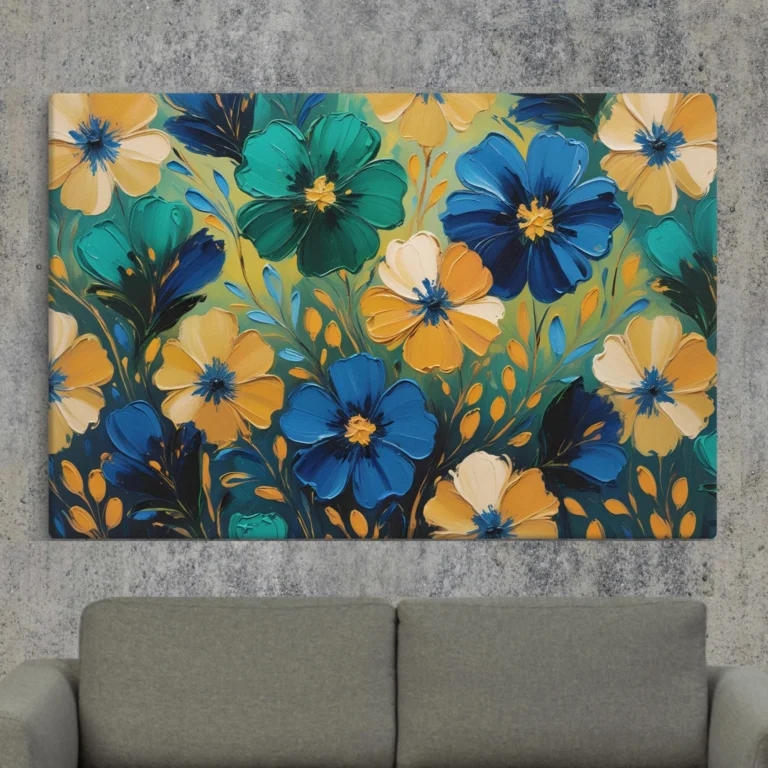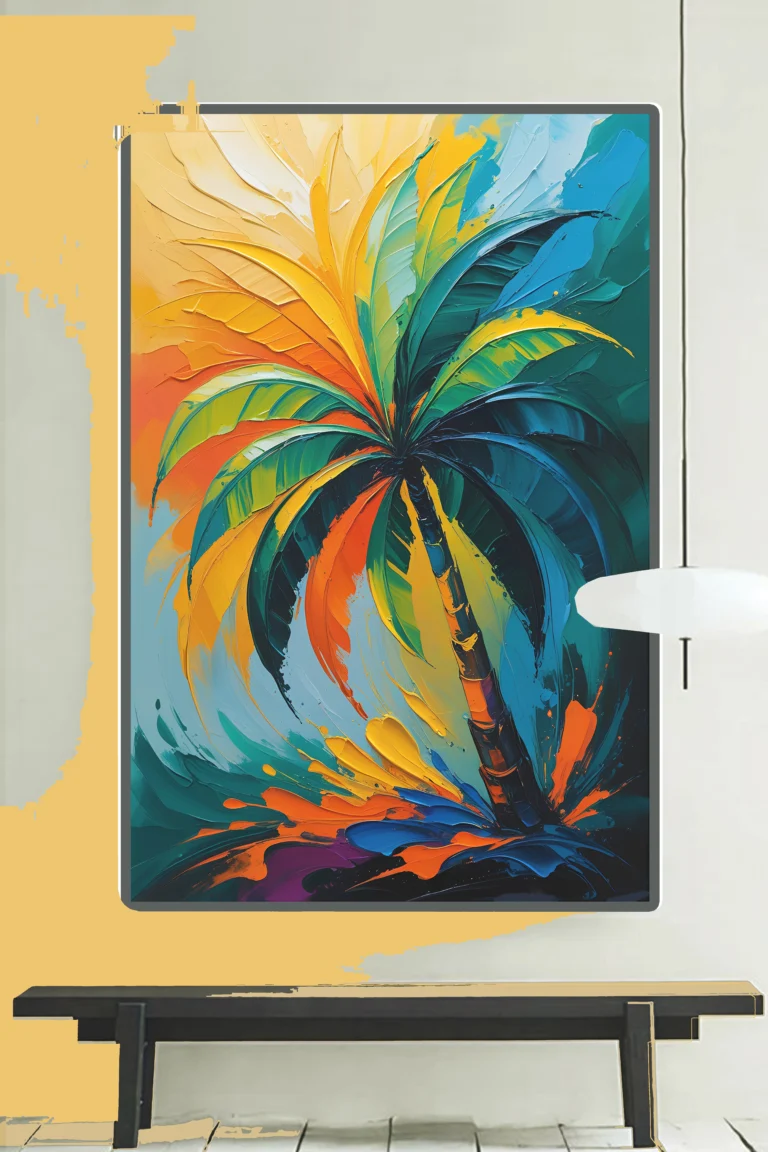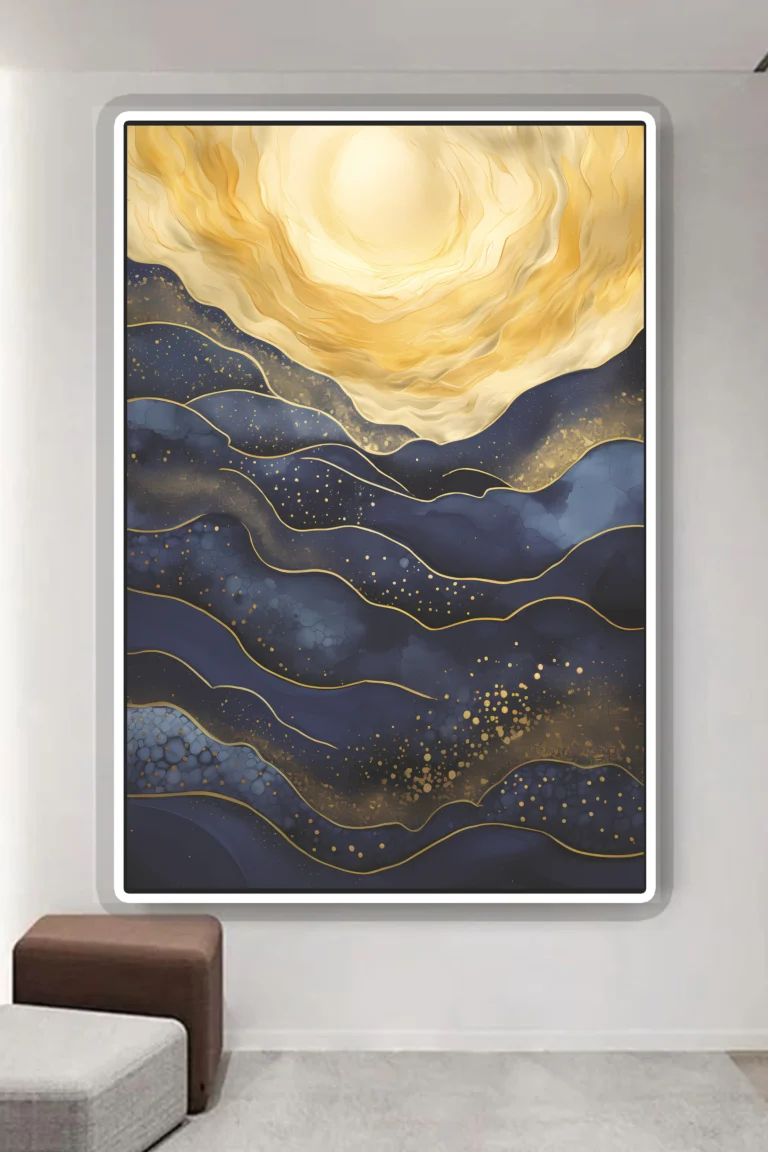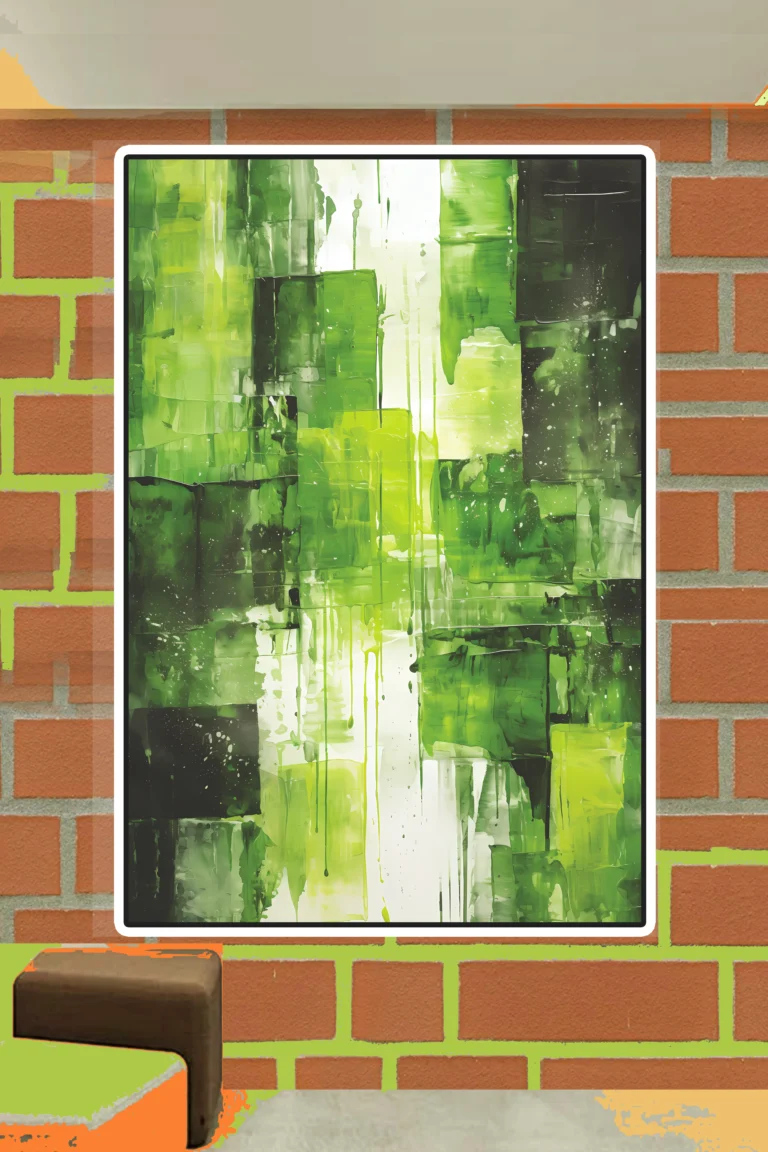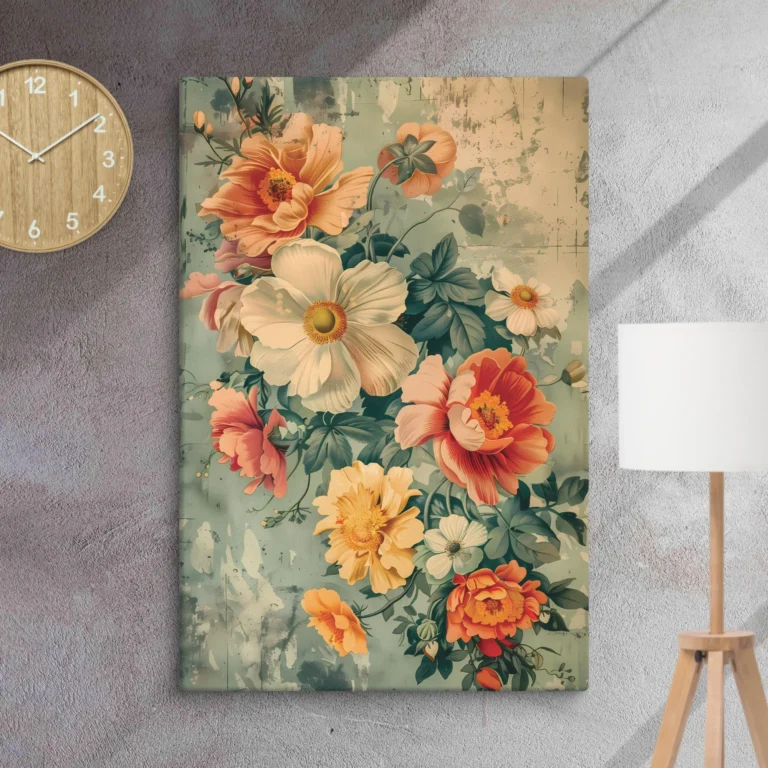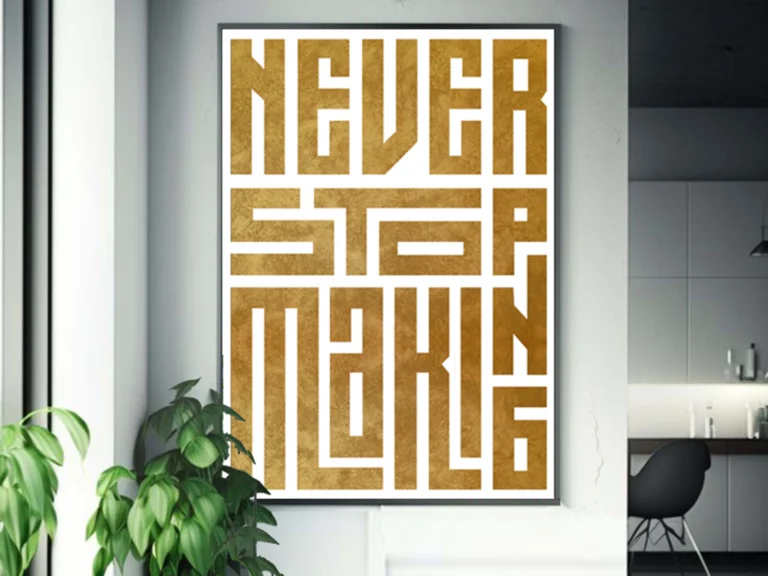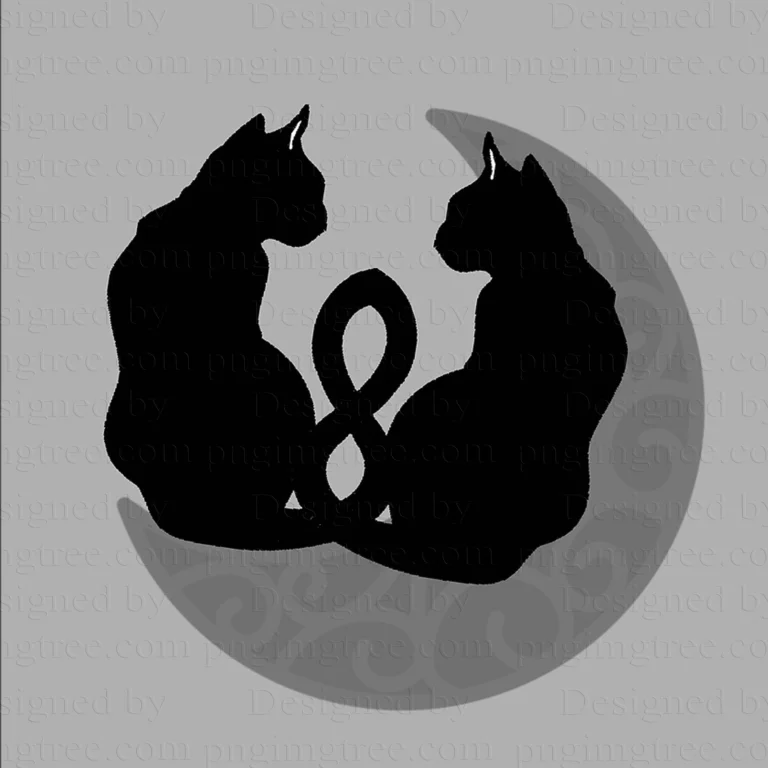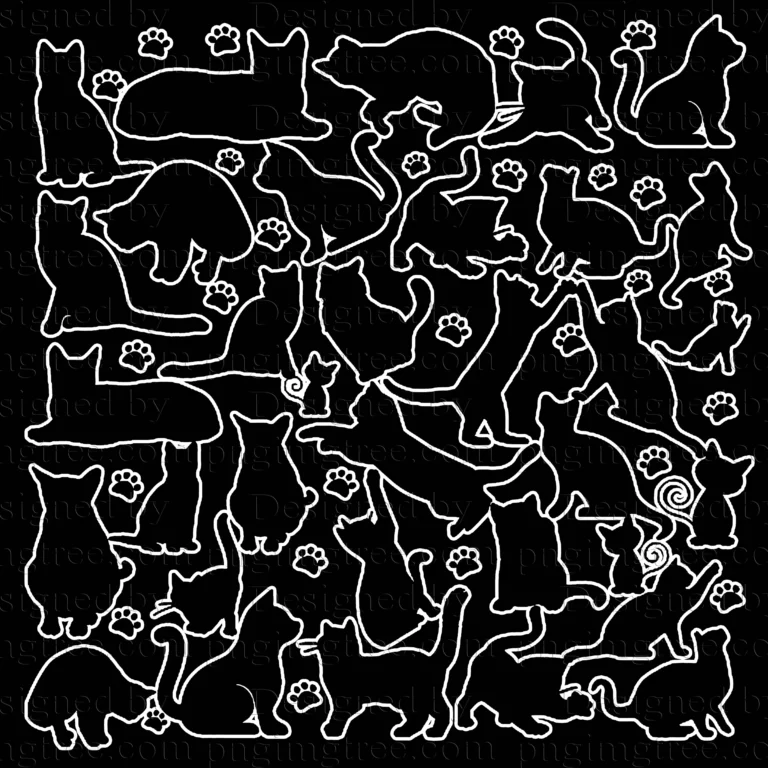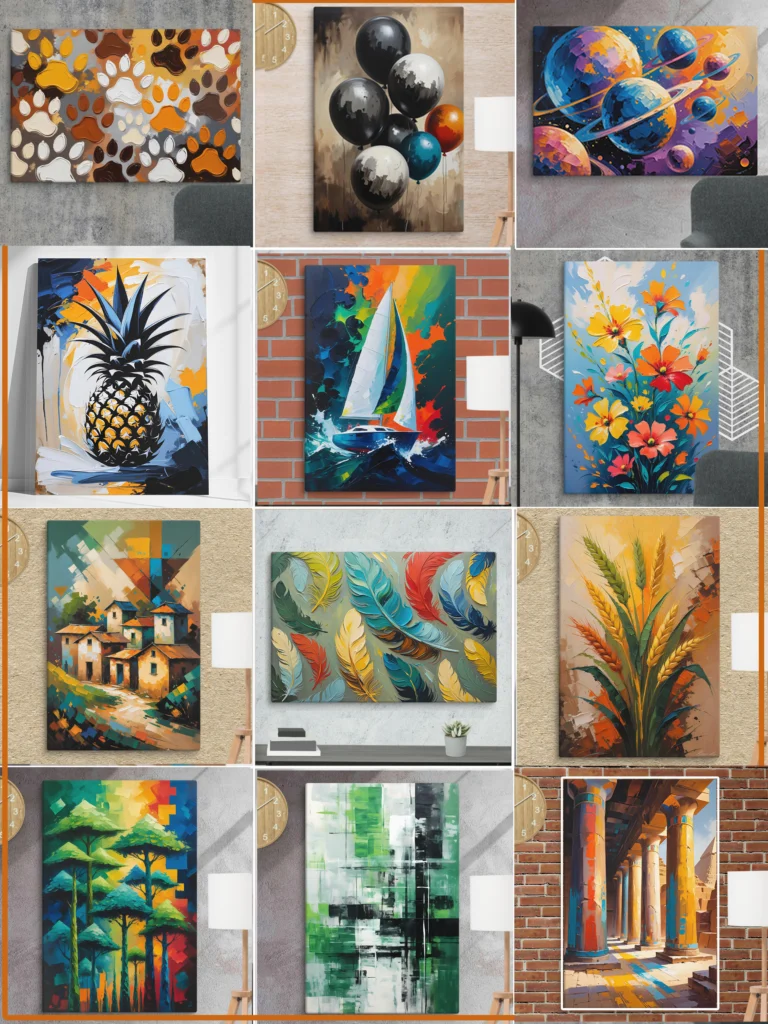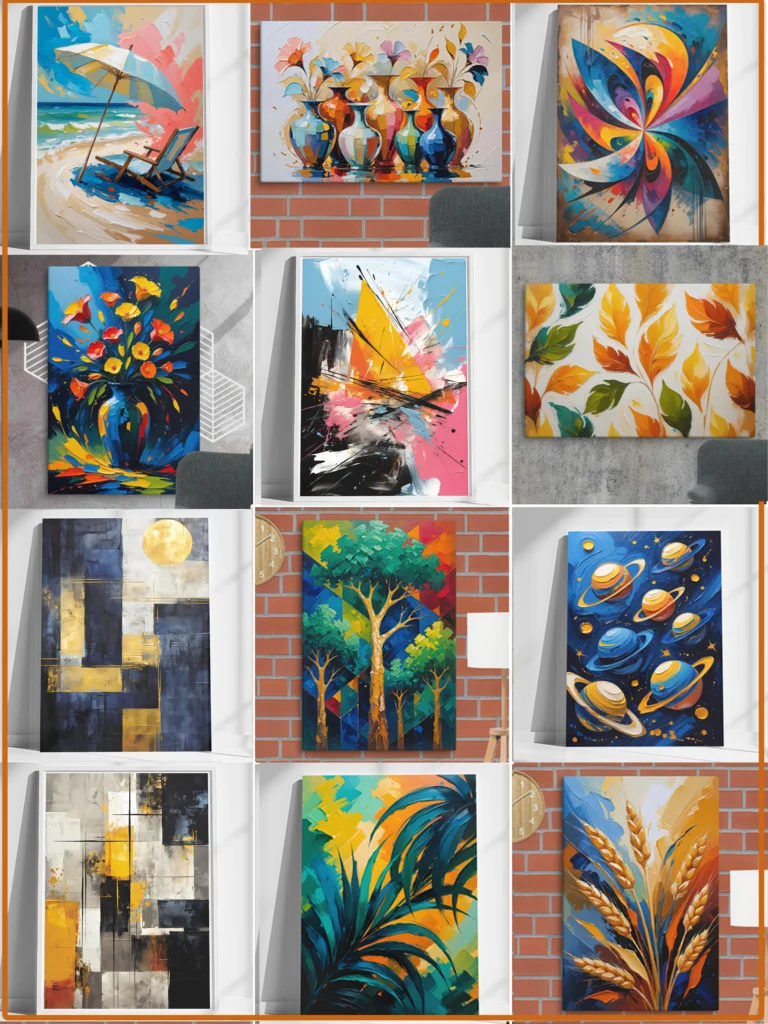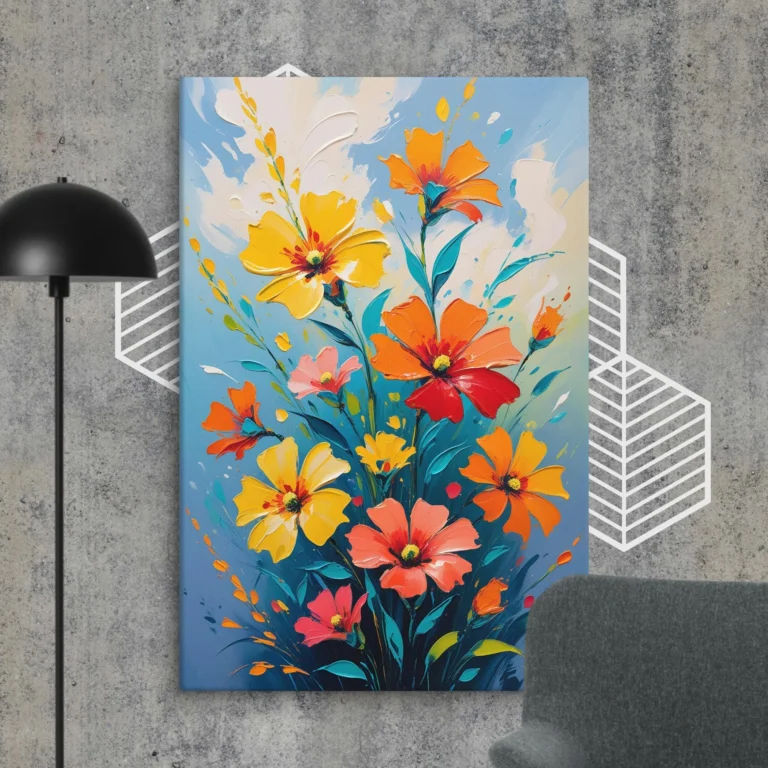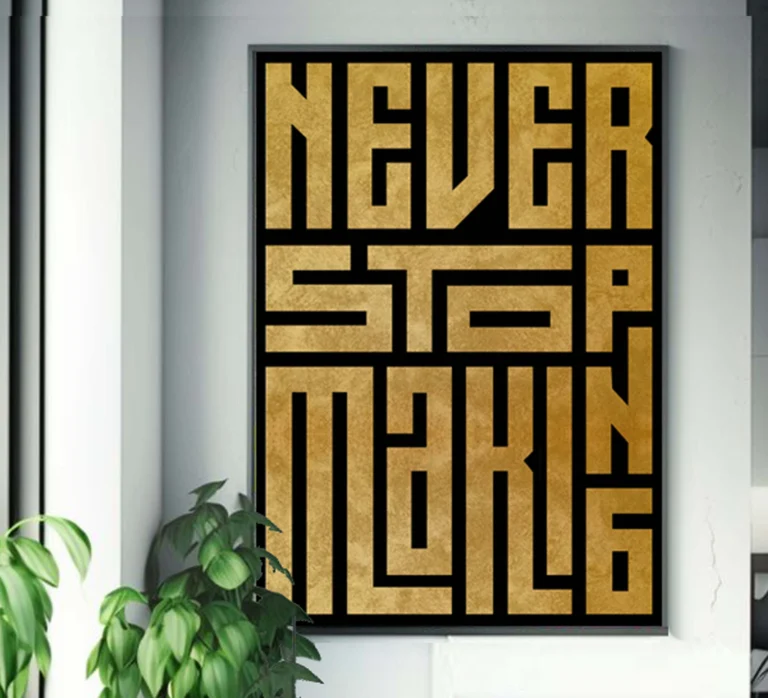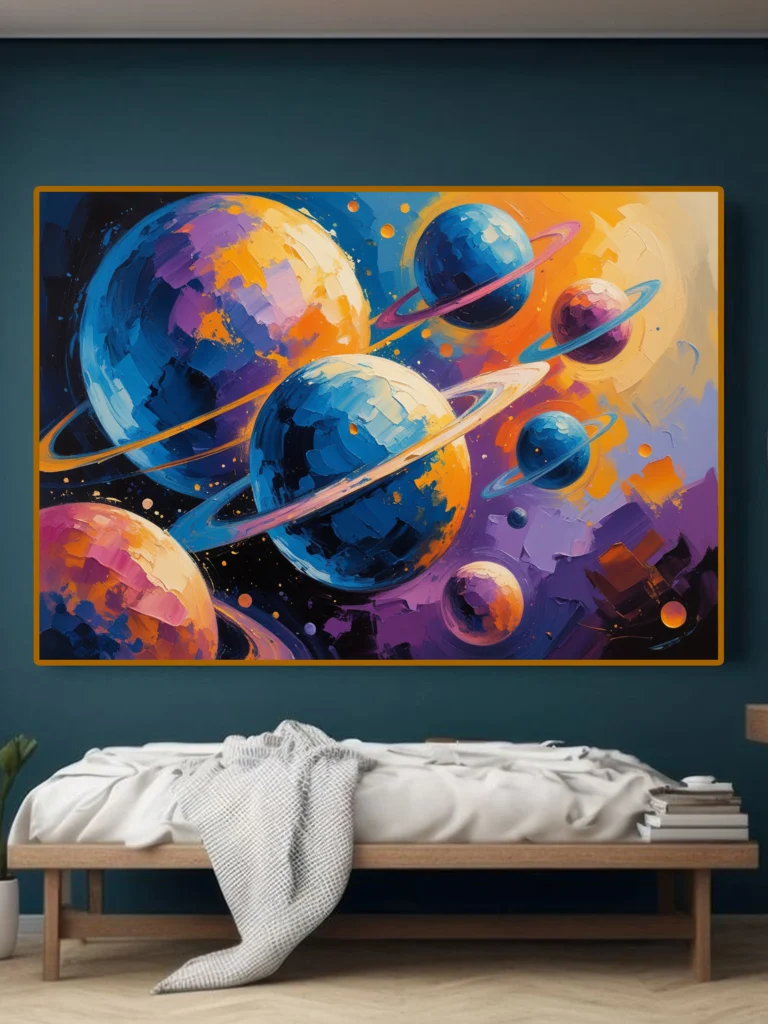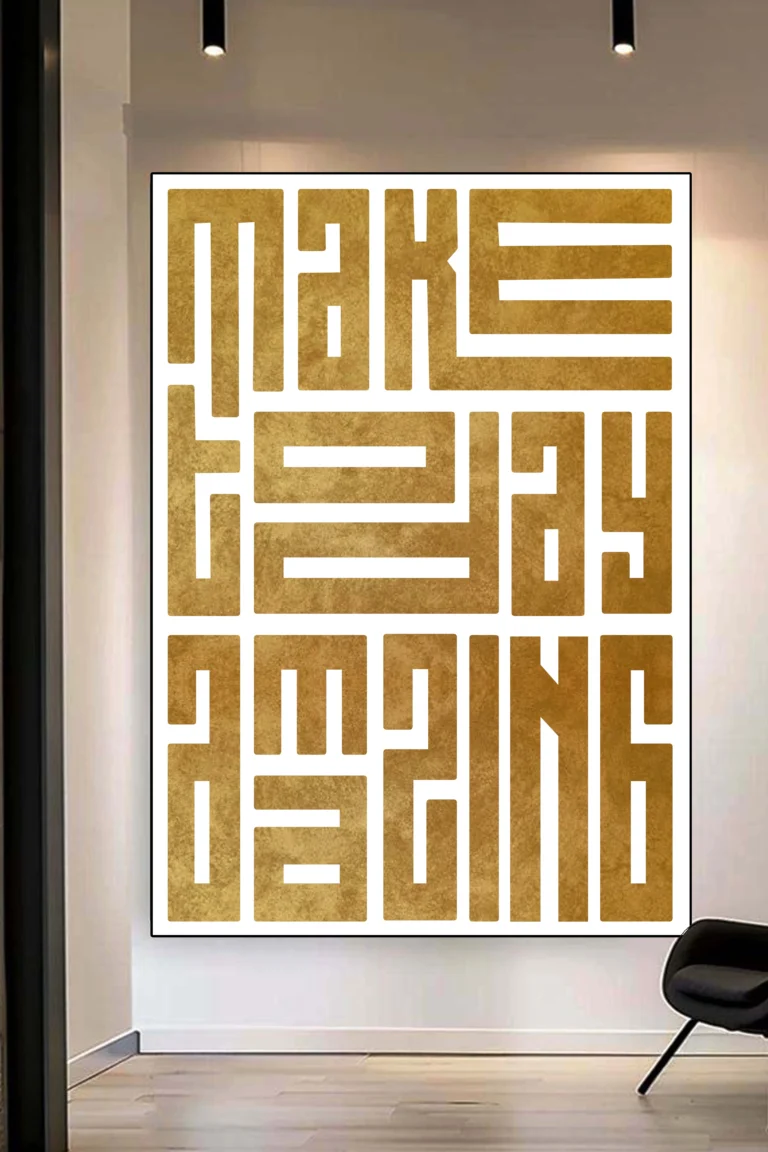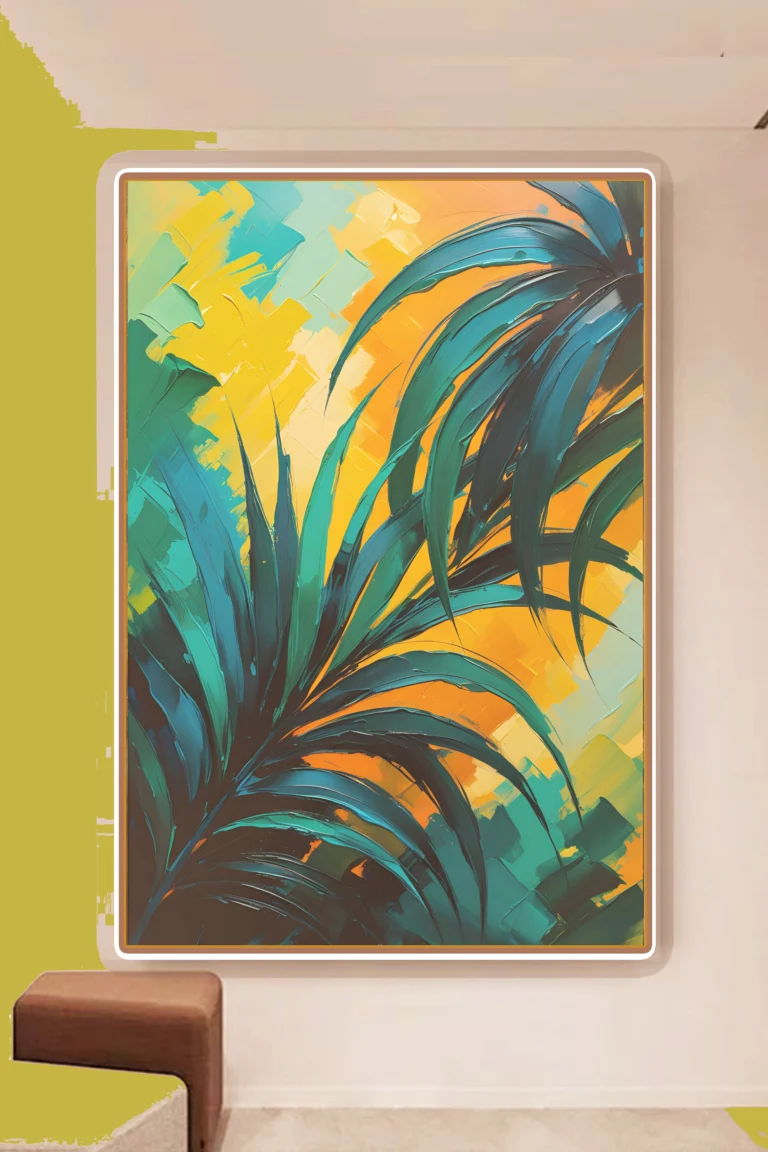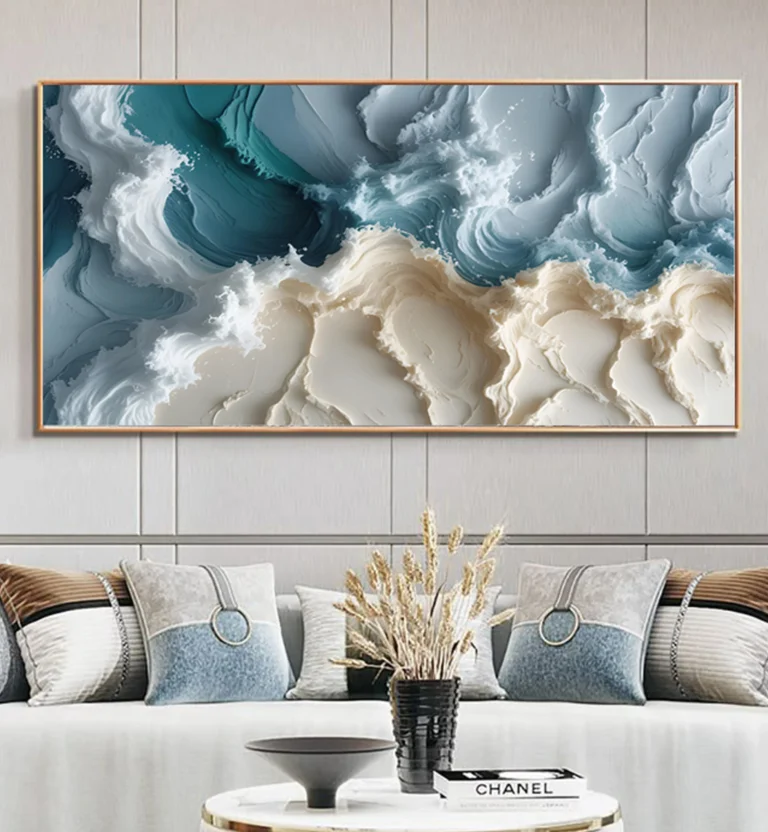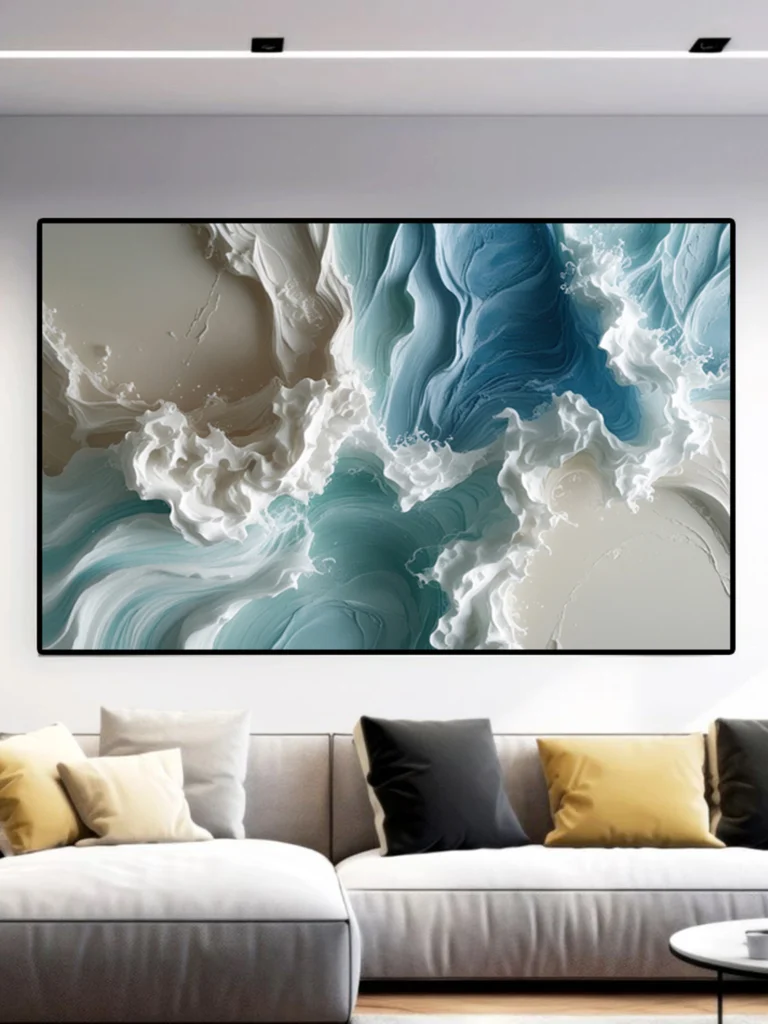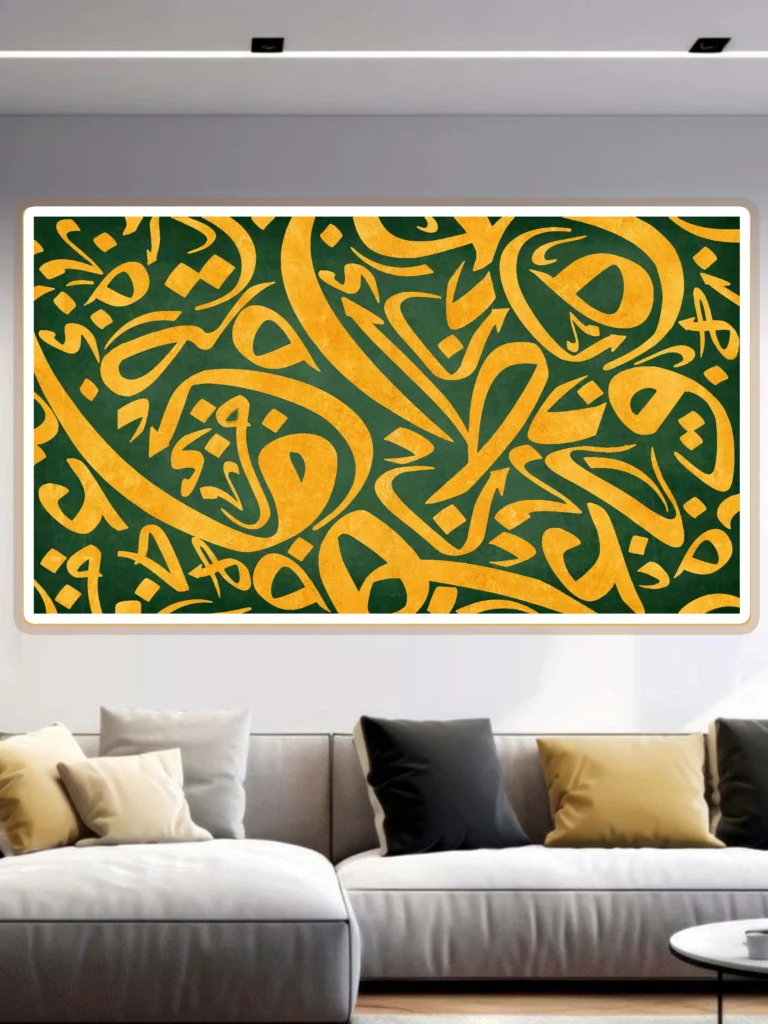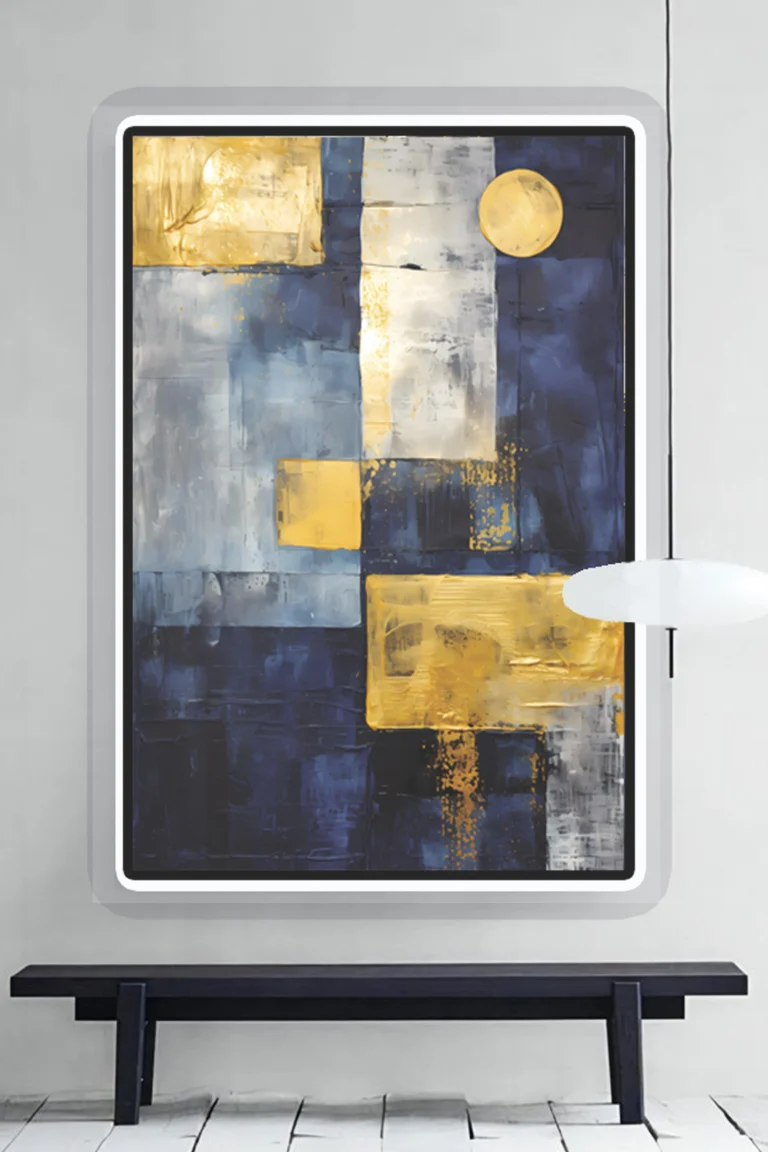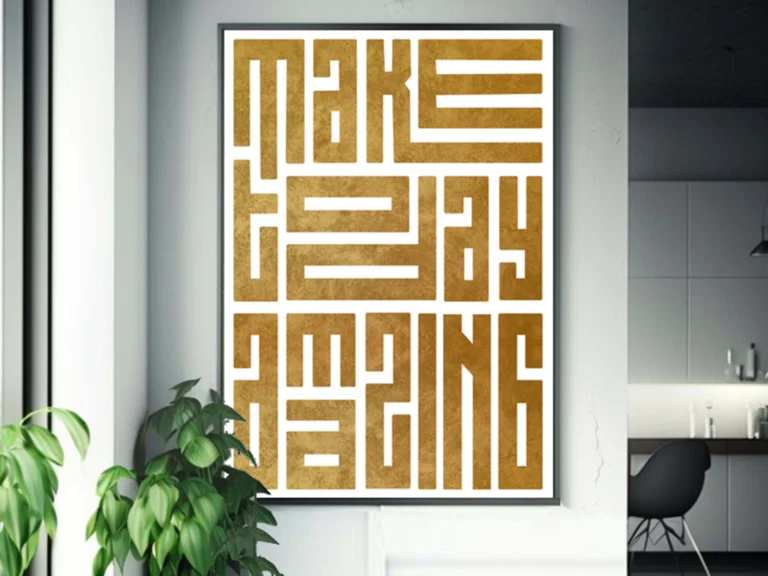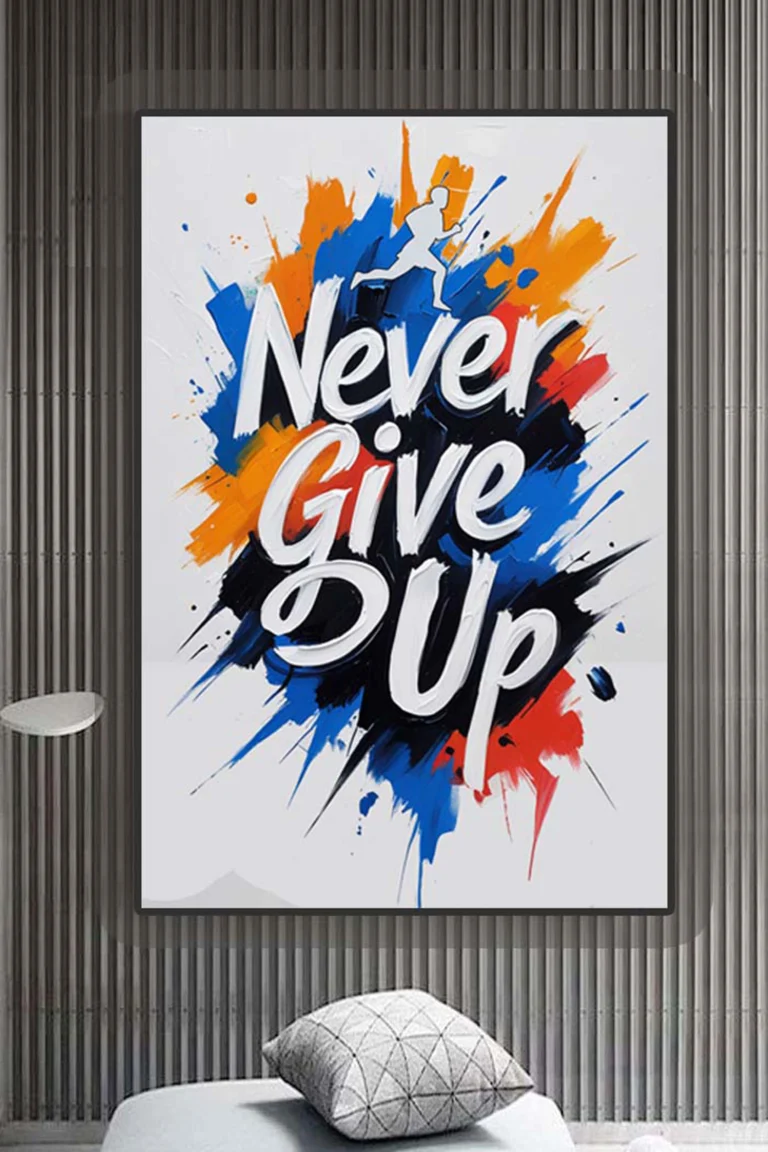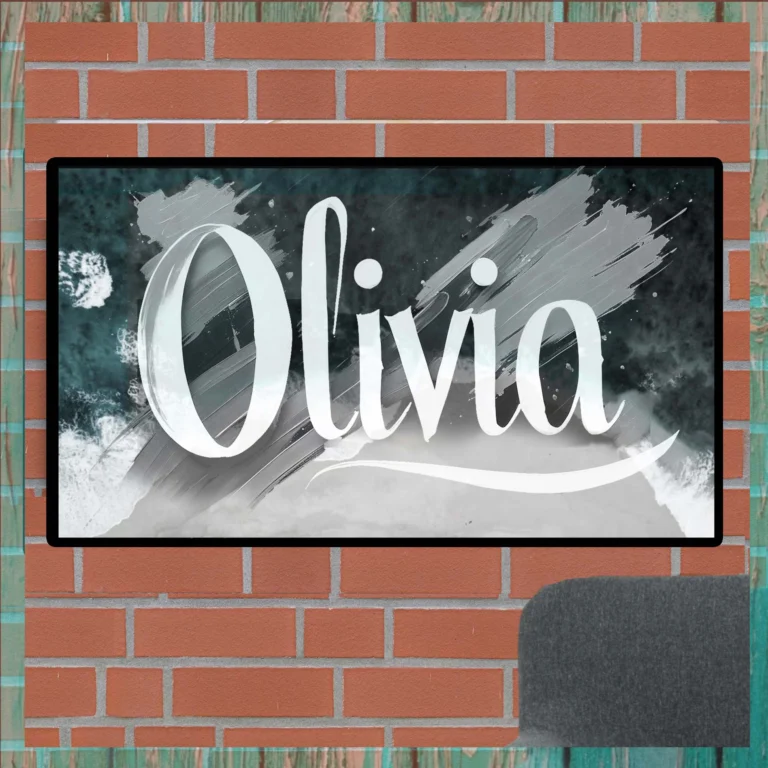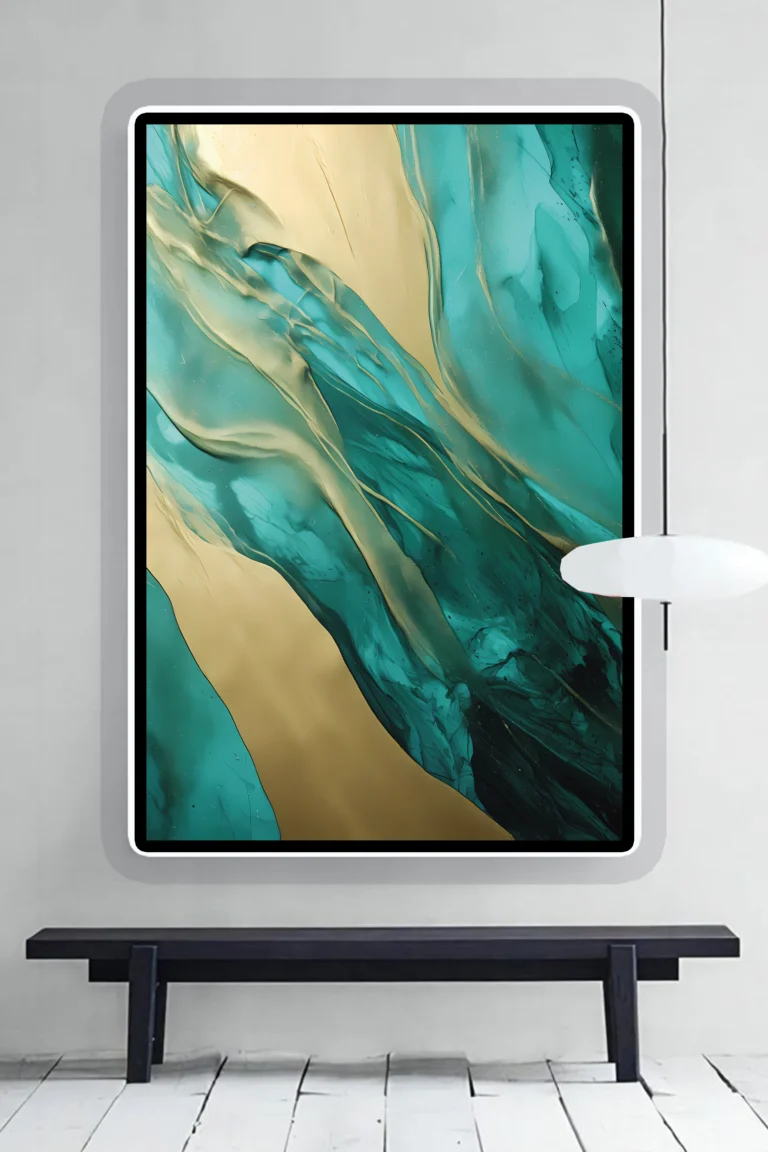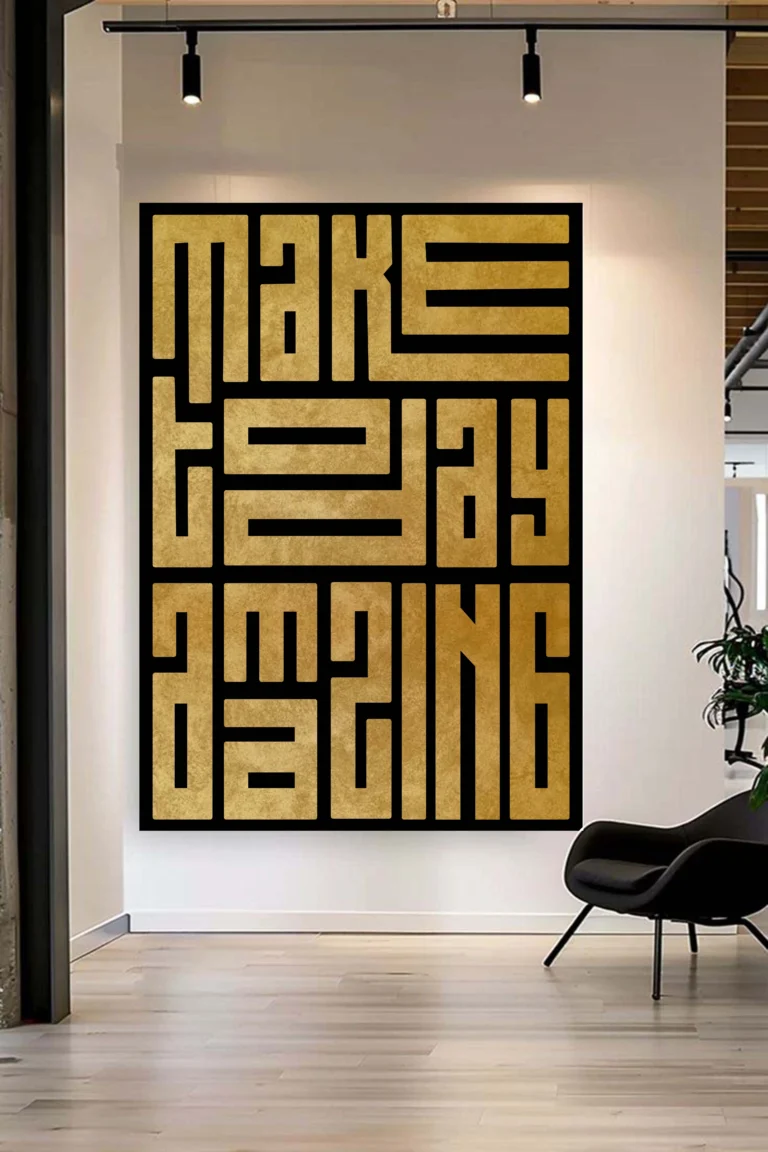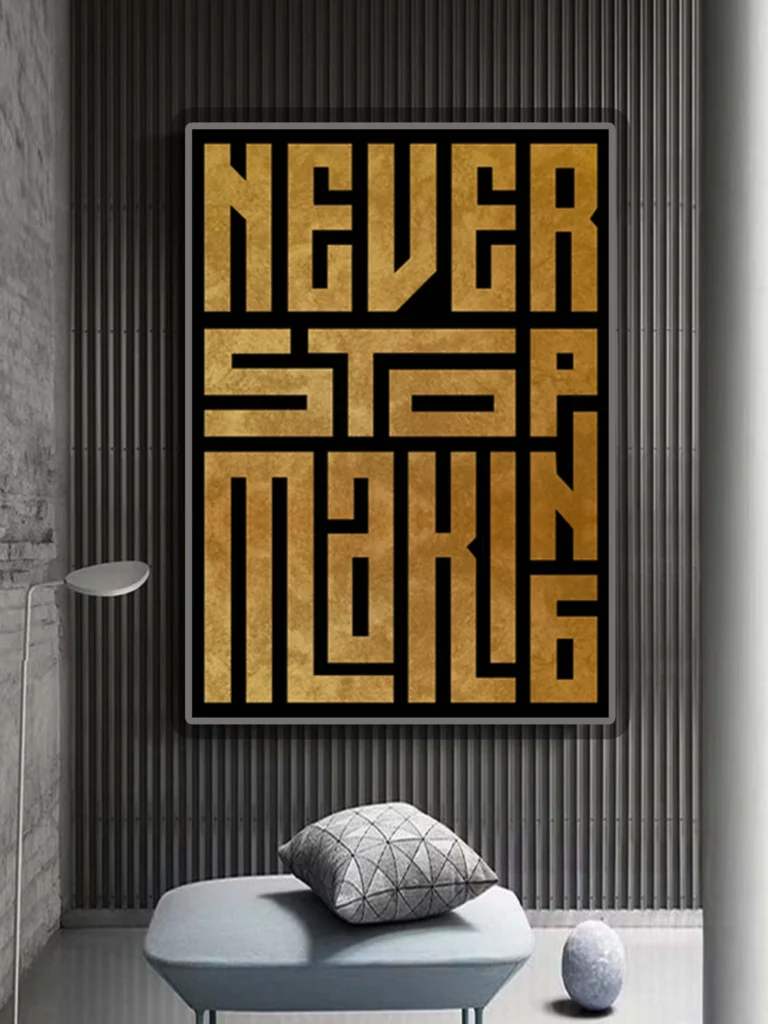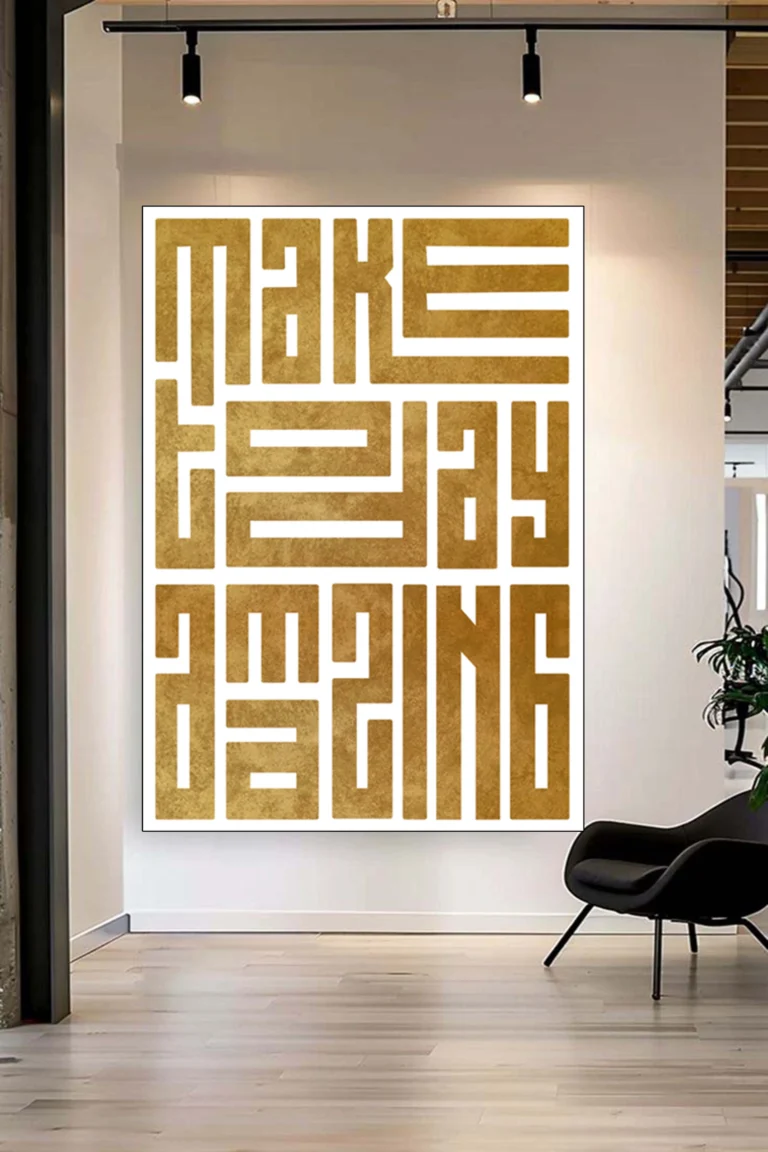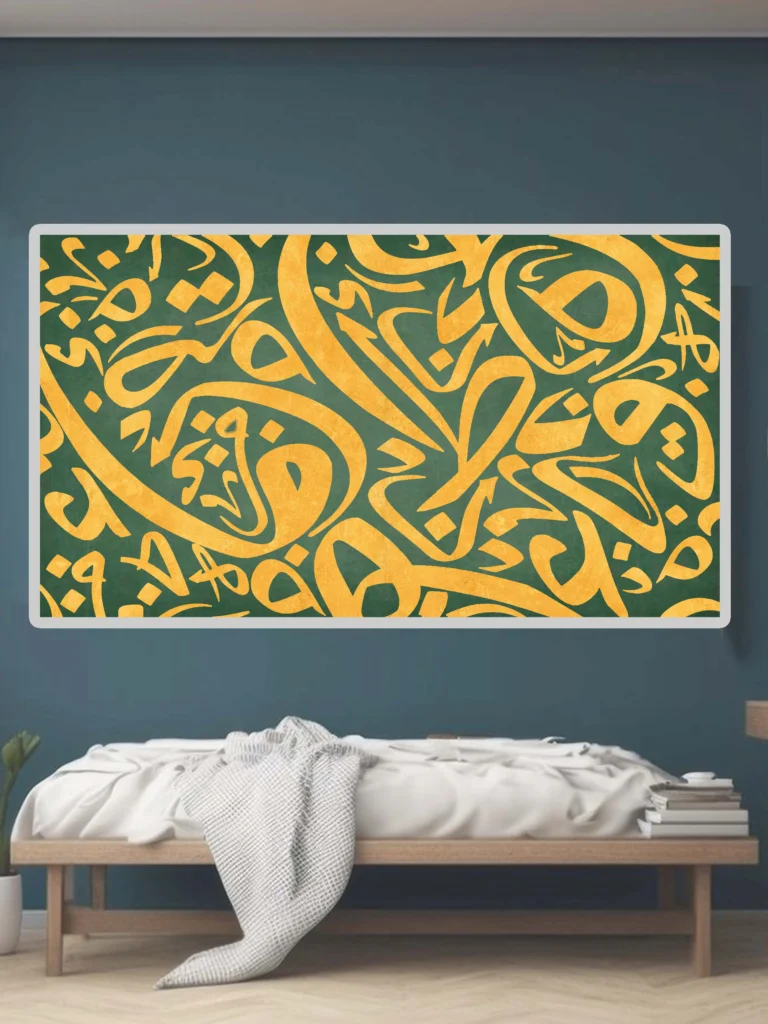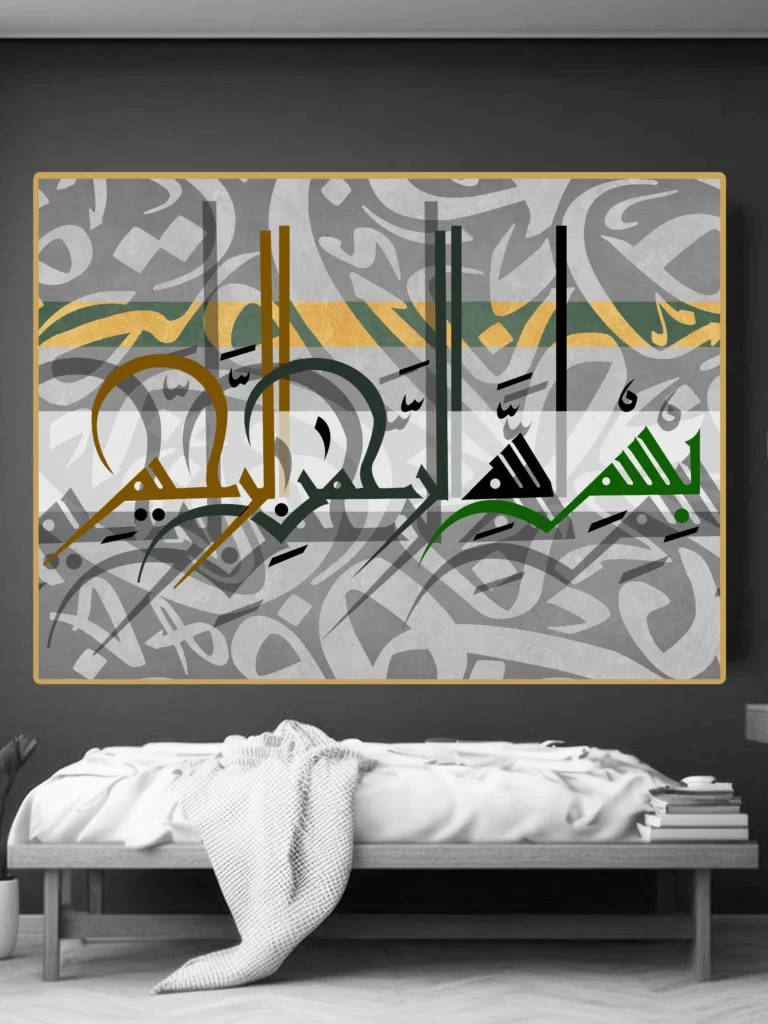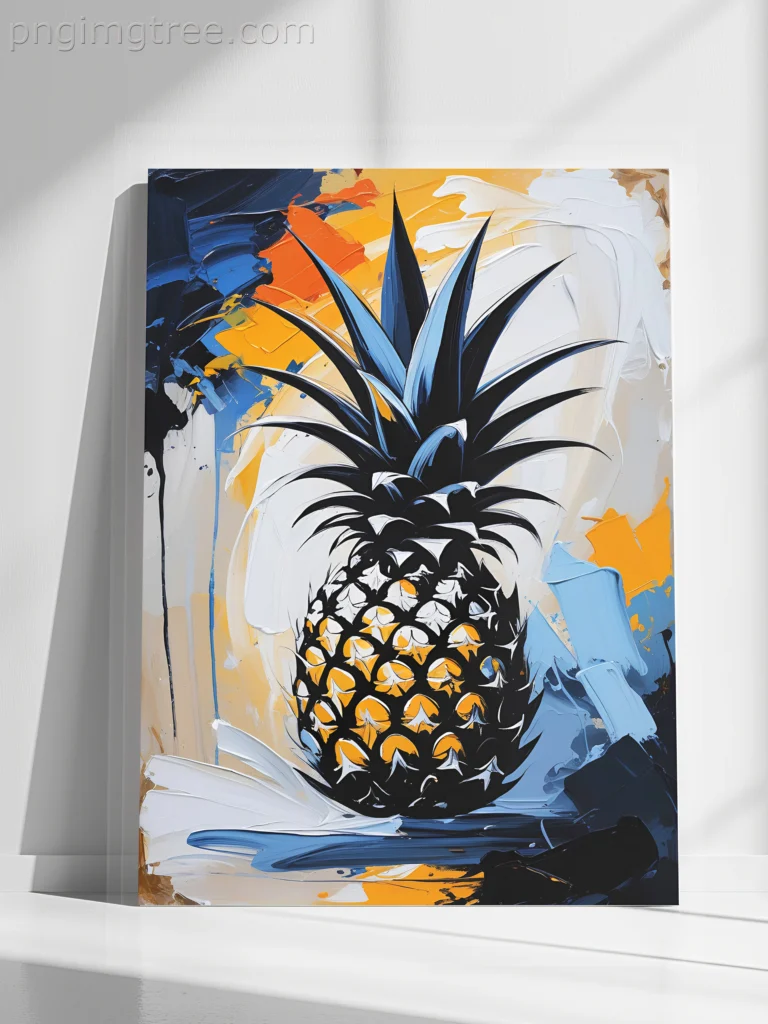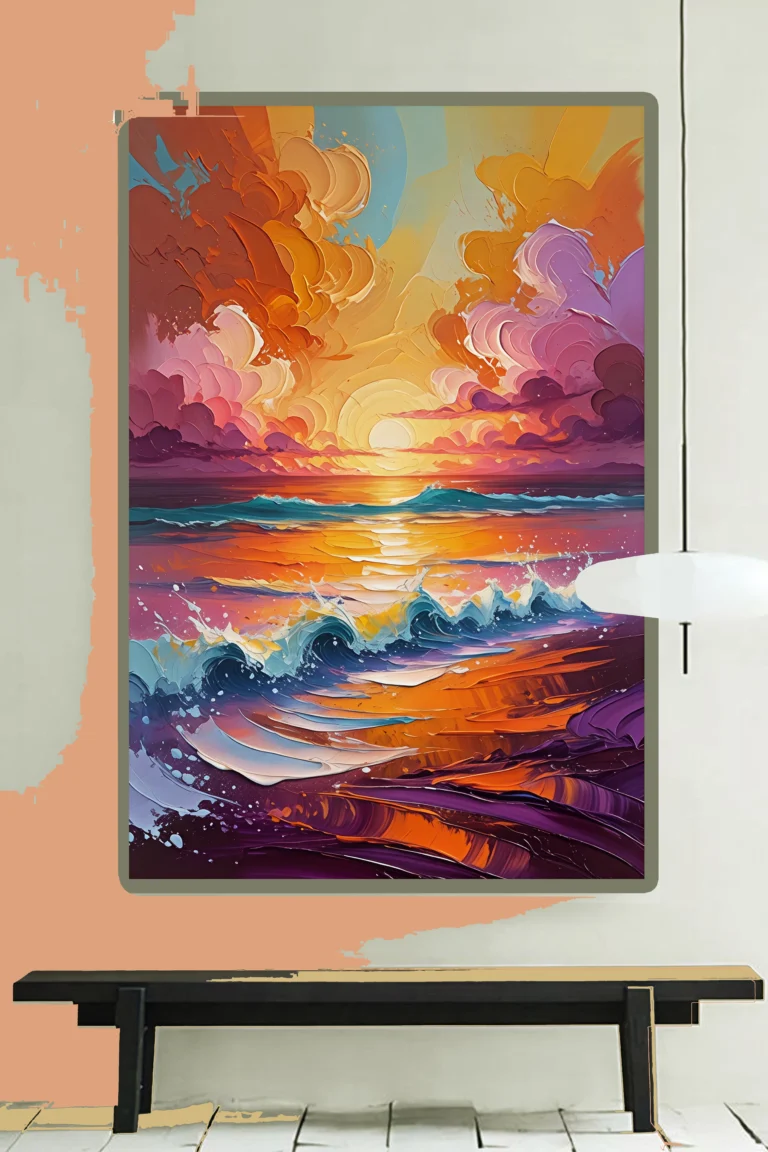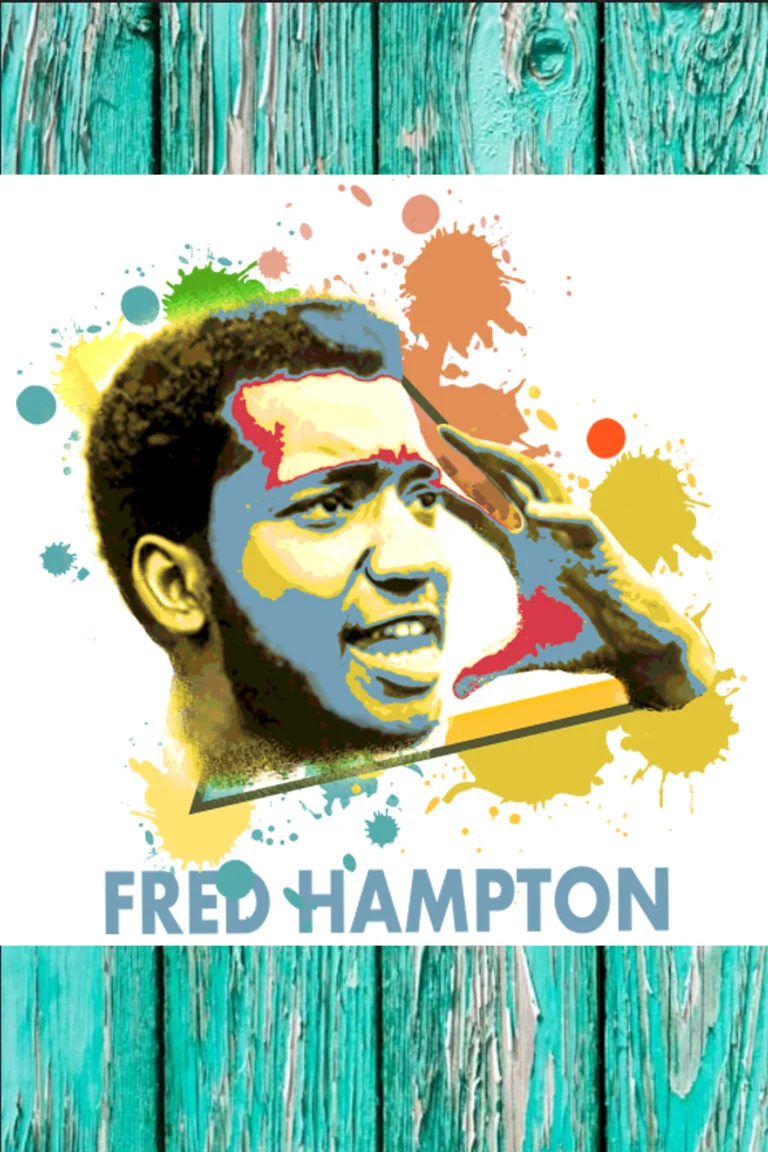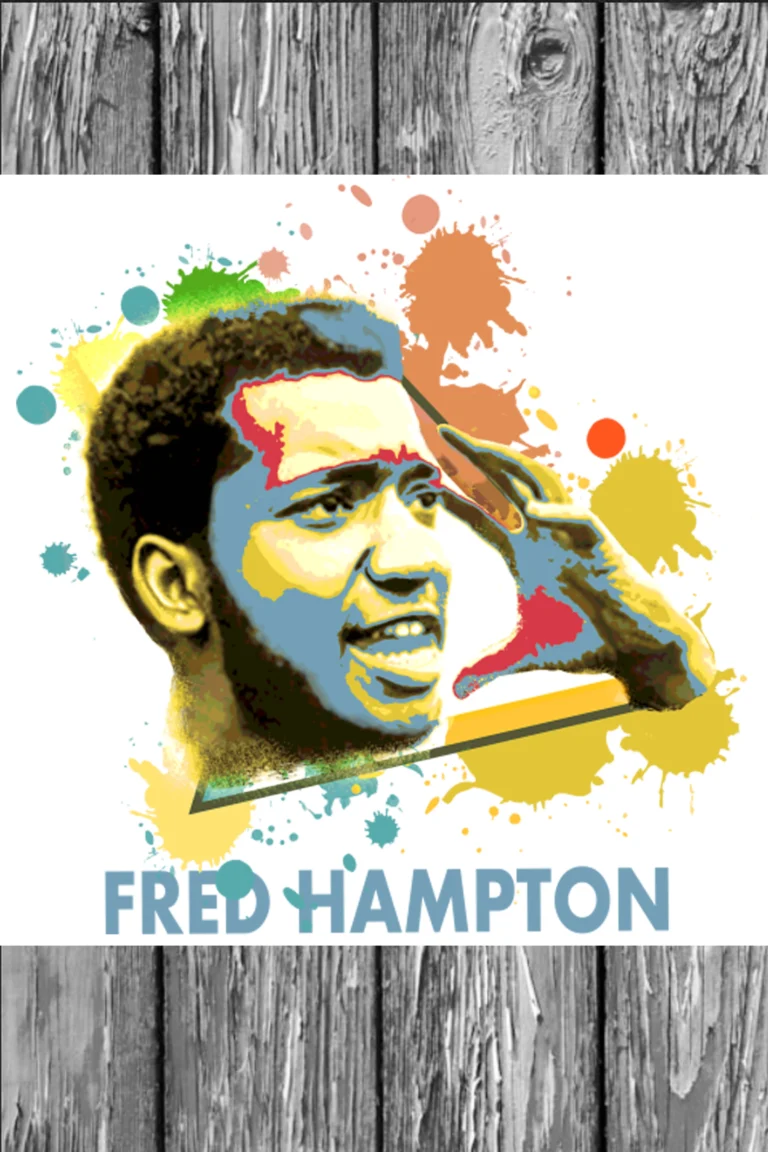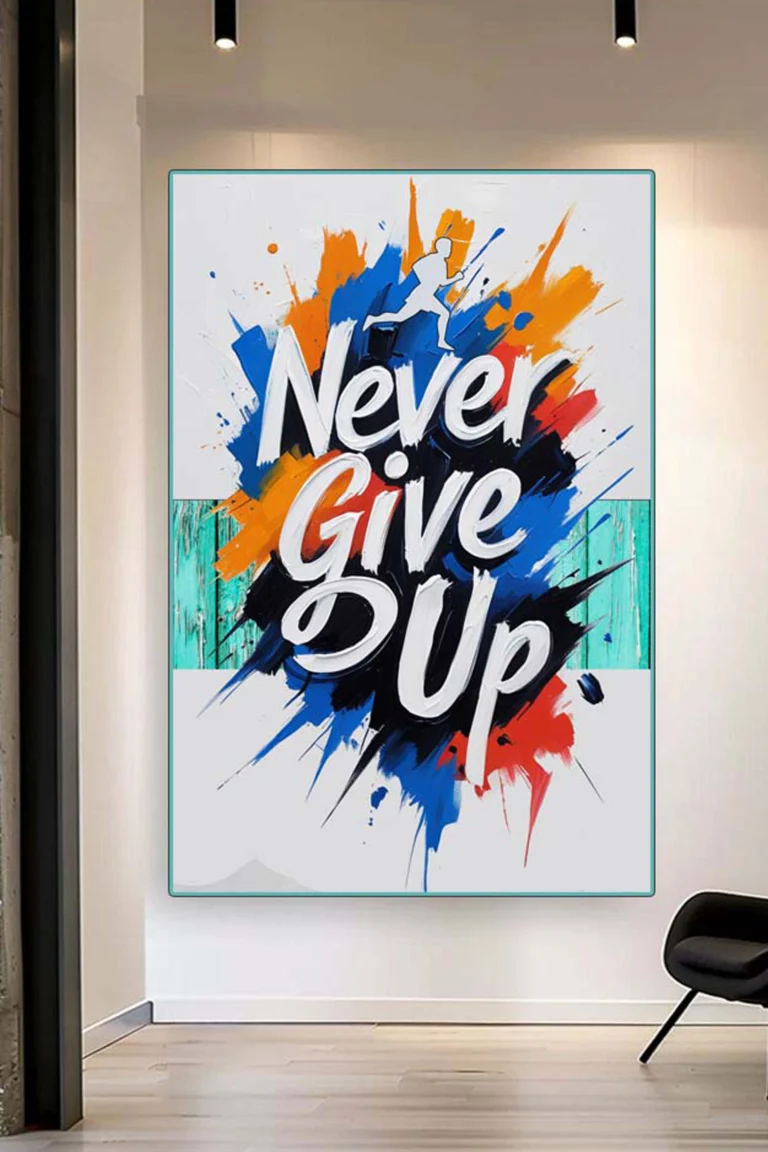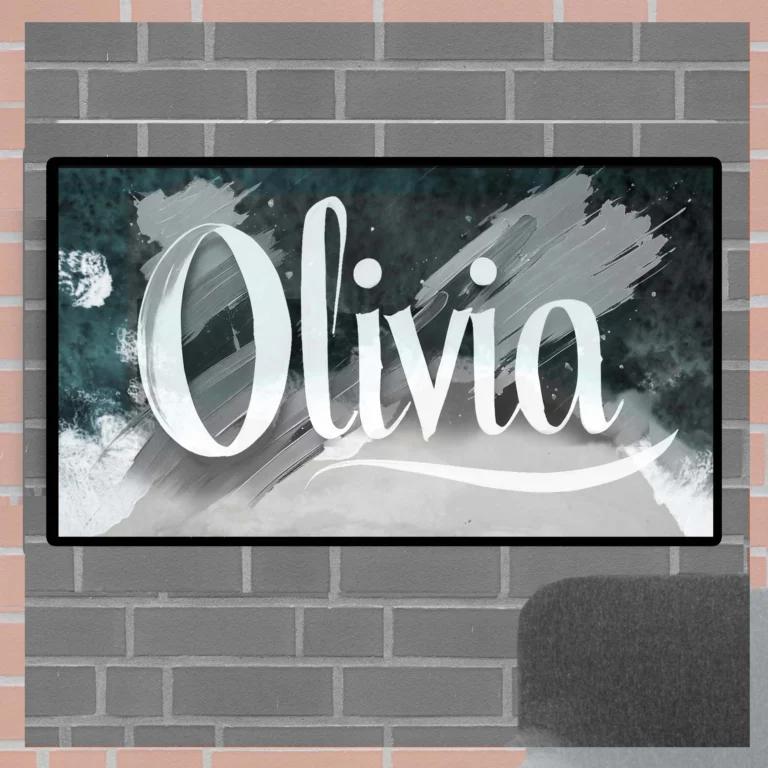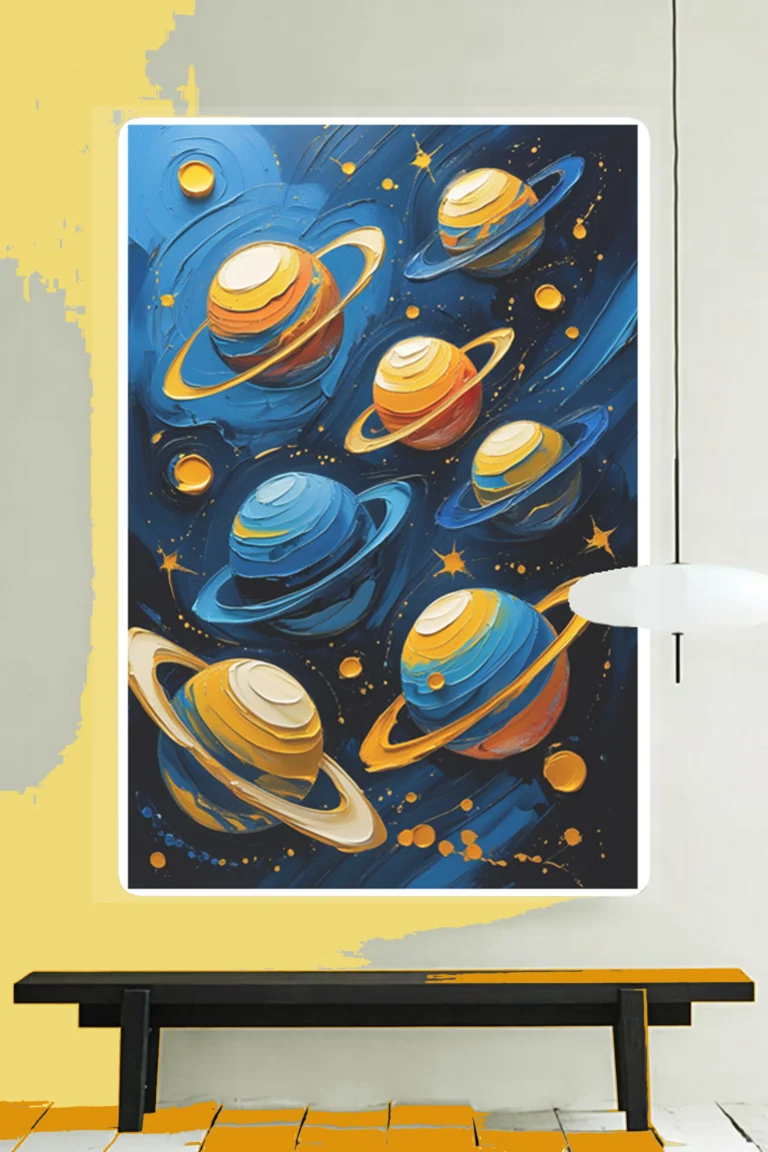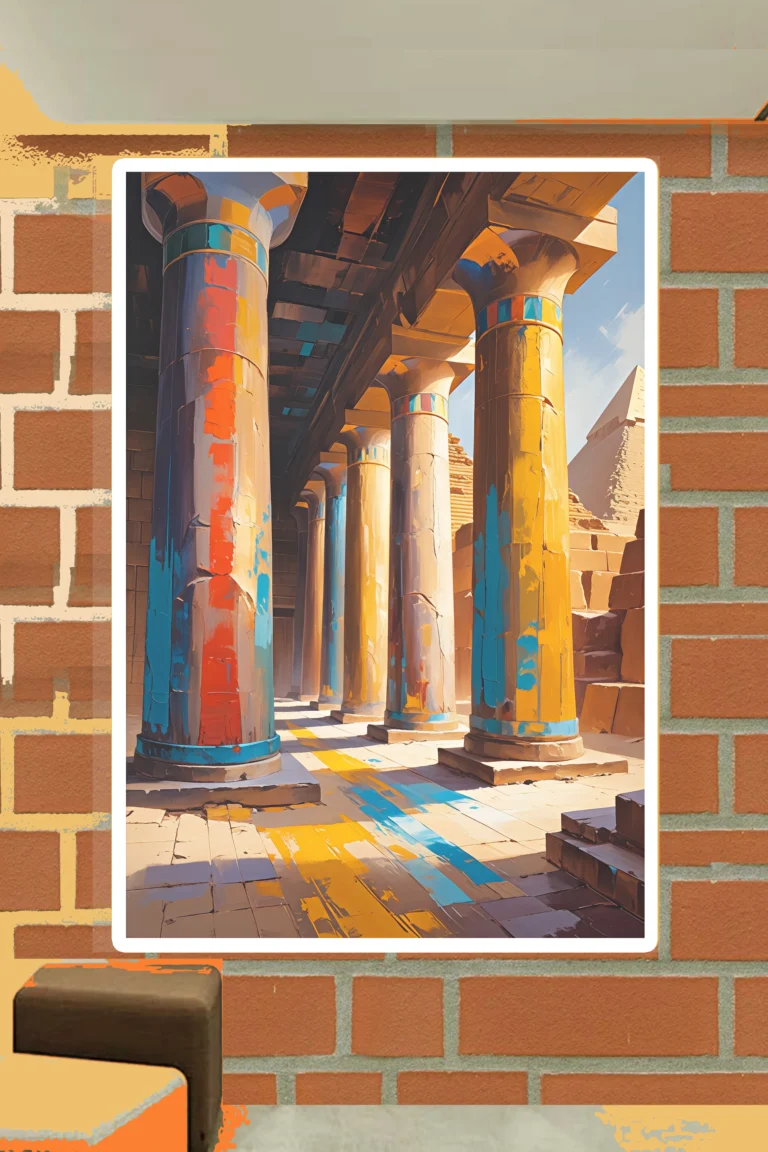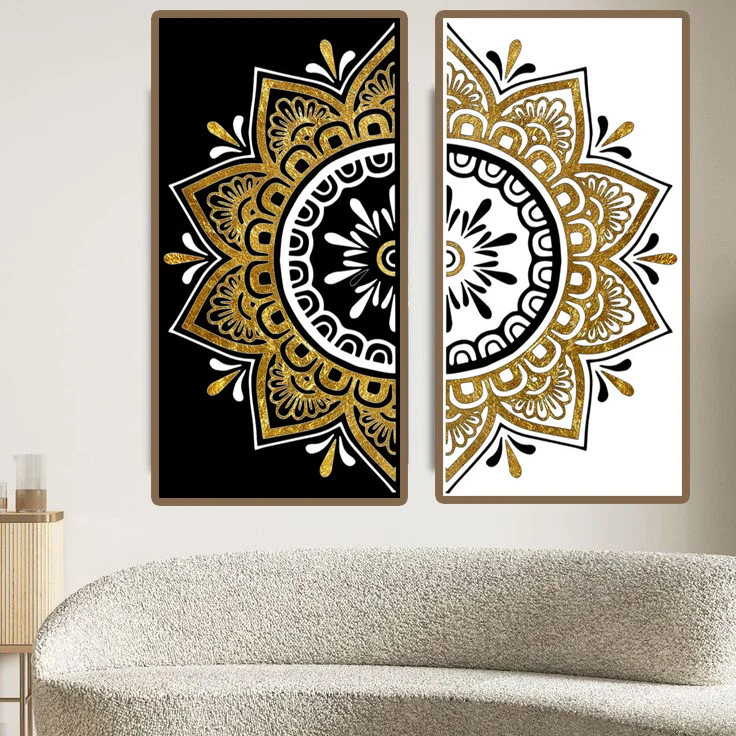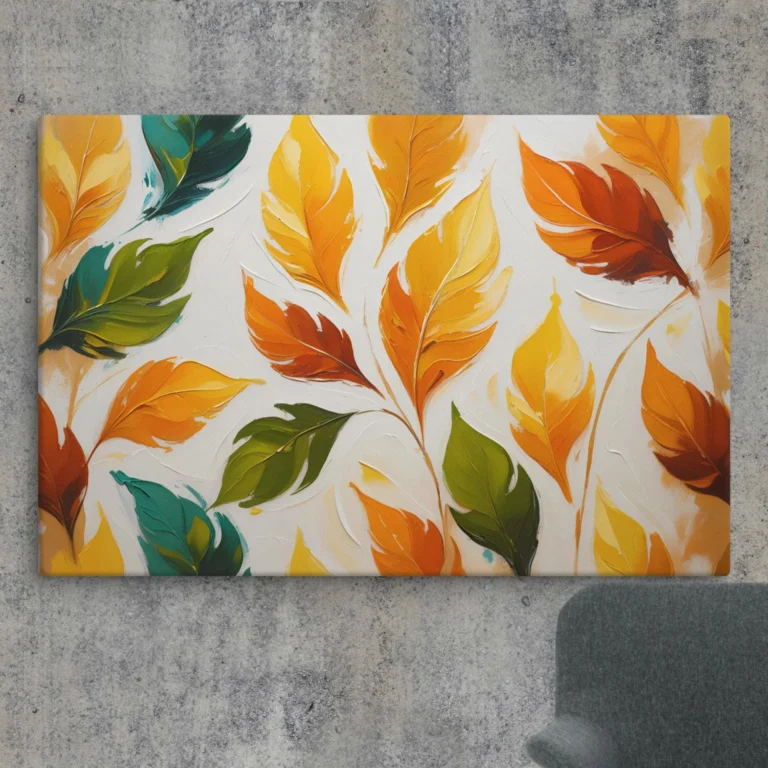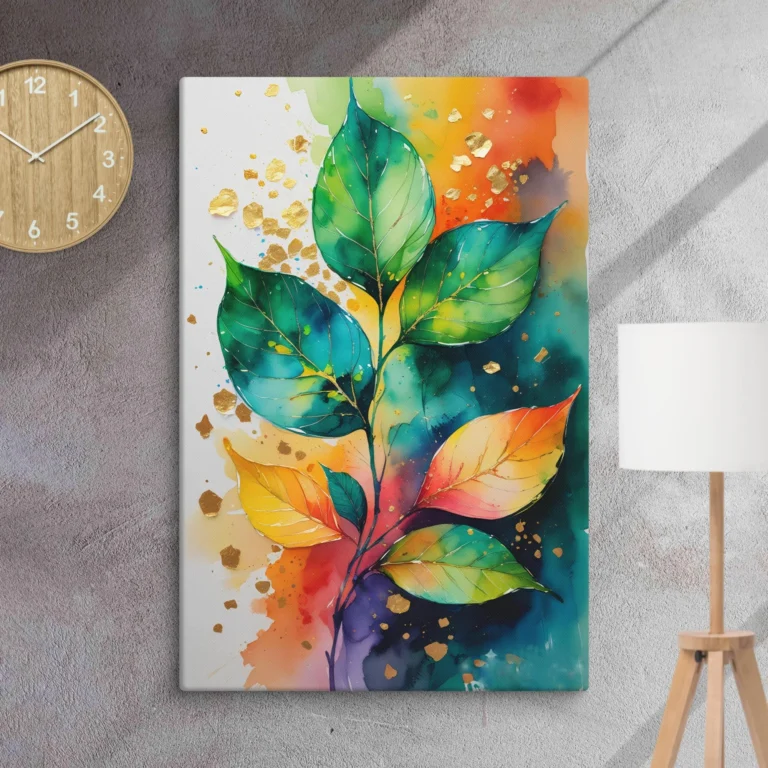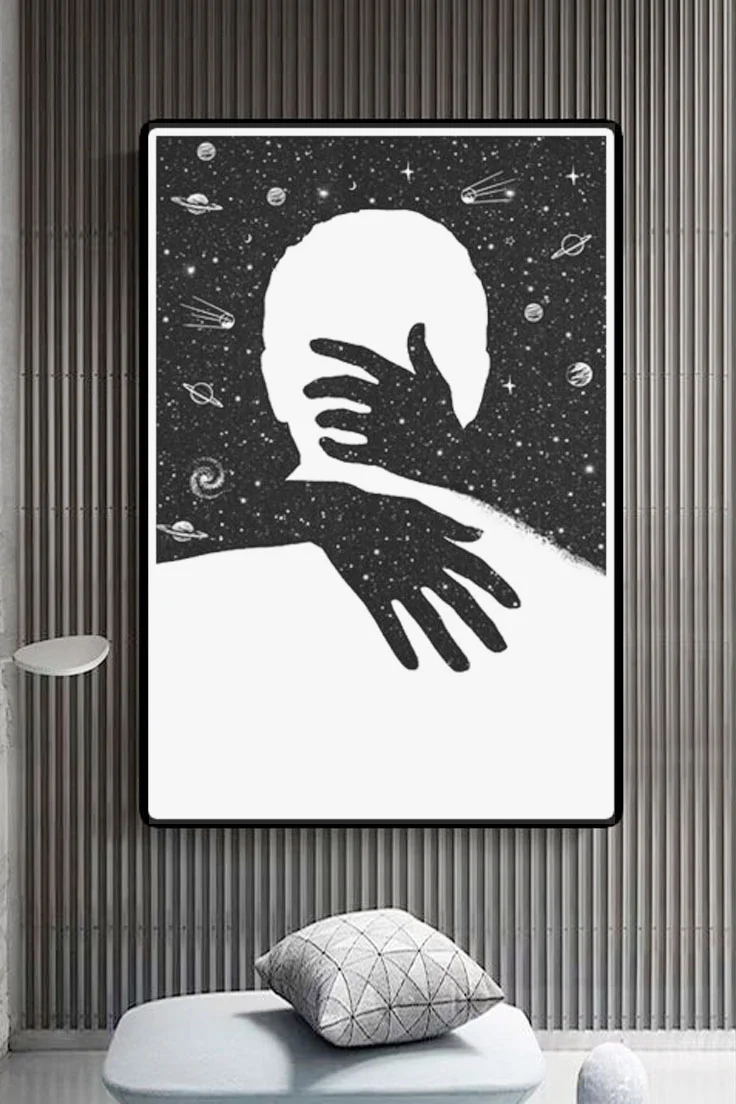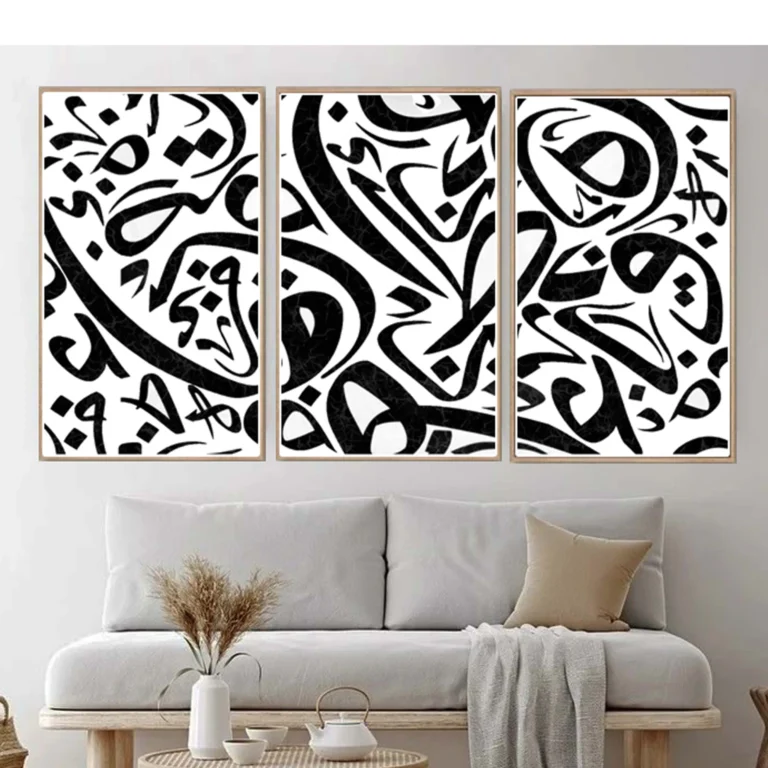
Arabic Calligraphy Alphabet Letters 3Panel
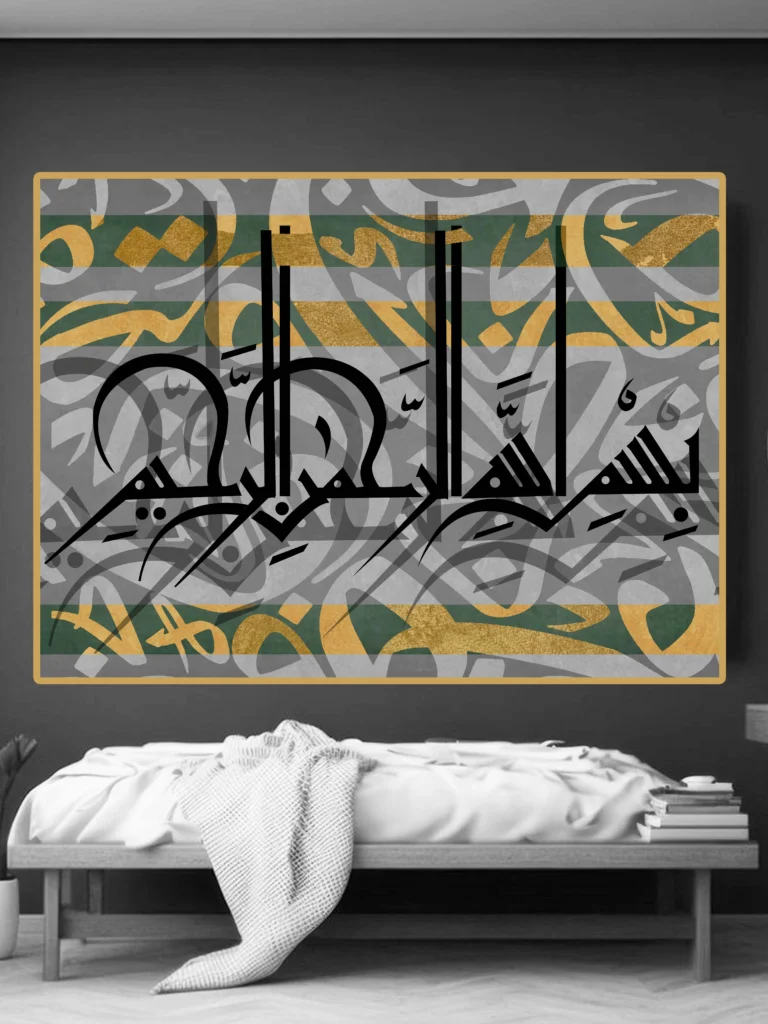
Islam in Calligraphy bismillah
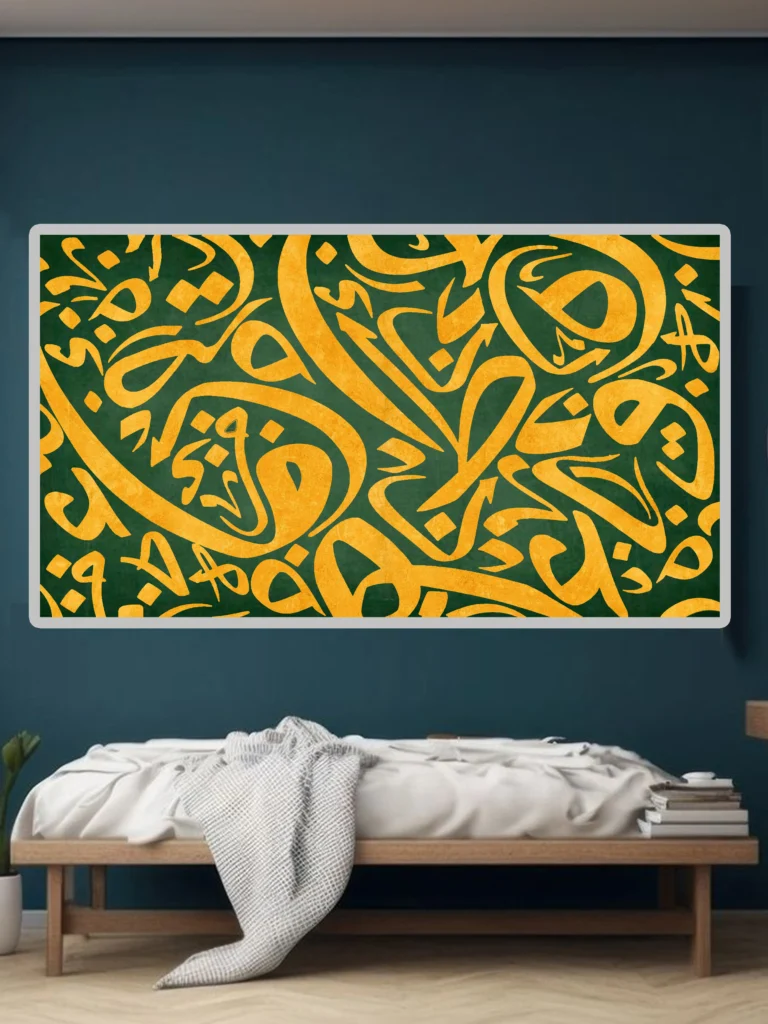
Arabic Calligraphy Alphabet Letters
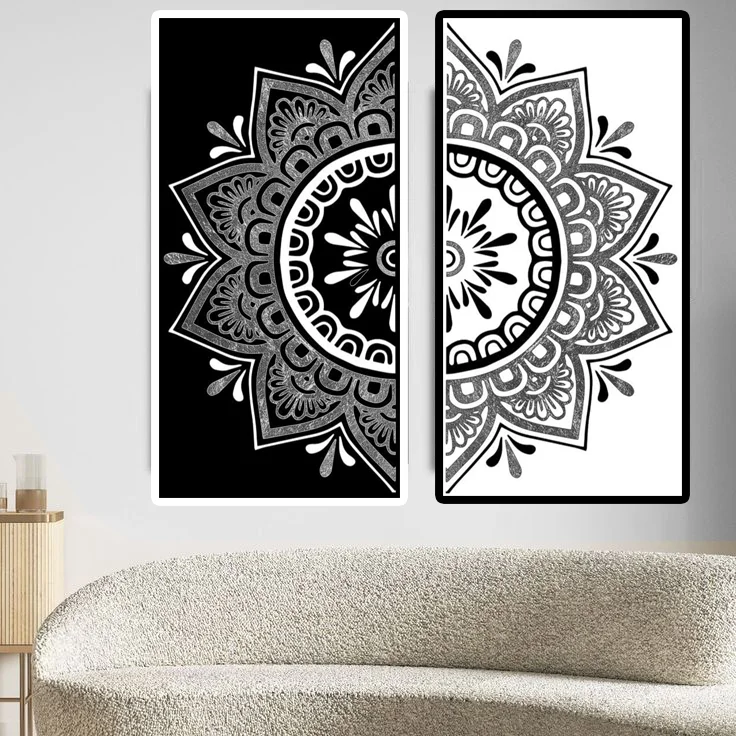
Black and White Mandala Pattern

Mandala Pattern 2 Panel
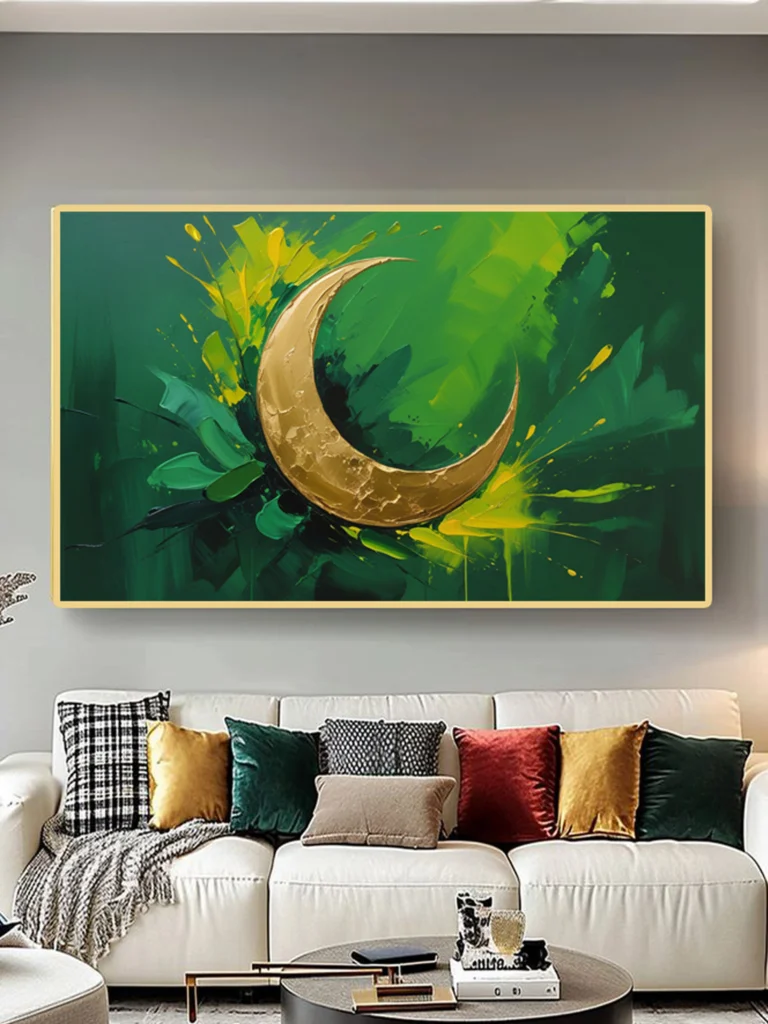
Golden Crescent Moon
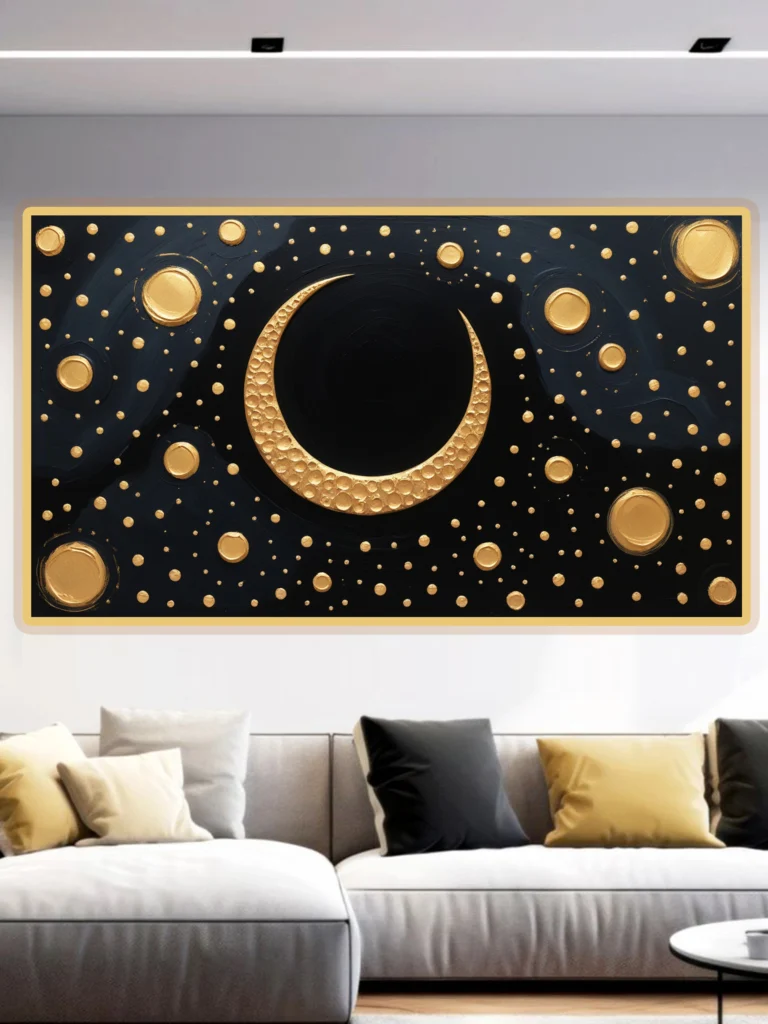
Crescent Moon

Palm Tree
Islam in Calligraphy :
Where Faith Meets Artistry
Islamic calligraphy stands as one of the most revered art forms in human history – a visual representation of faith that has adorned mosques, manuscripts, and monuments for over fourteen centuries. More than mere decoration, Islam in calligraphy represents the profound connection between spiritual devotion and artistic mastery. This ancient yet ever-evolving art form continues to captivate believers and art enthusiasts alike, blending Quranic verses, Hadith, and sacred phrases into breathtaking visual compositions.
This comprehensive guide explores:
- The theological foundations of Islamic calligraphy
- Major historical styles and their evolution
- Contemporary interpretations in modern art
- Spiritual significance in Muslim culture
- How to incorporate Islamic calligraphy in home decor
- Where to acquire authentic calligraphy pieces
The Divine Origins of Islam in Calligraphy
1. Quranic Roots of the Art Form
- The revelation of the Quran in Arabic elevated the language to sacred status
- Early Muslims sought to preserve divine words through beautiful writing
- Calligraphy became known as “the geometry of the spirit”
2. Prohibition of Figurative Art
- Islamic tradition discourages human/animal imagery in religious contexts
- Calligraphy emerged as the primary visual art form in Muslim societies
- Served both decorative and didactic purposes in mosques and madrasas
3. Spiritual Dimensions
- The act of writing sacred texts considered a form of worship
- Calligraphers traditionally begin with “Bismillah” (In God’s name)
- Master calligraphers held in high esteem as guardians of tradition
Historical Styles of Islam in Calligraphy
1. Kufic: The Ancient Monumental Script
- Earliest formal Quranic script (7th century)
- Angular, geometric style used in early Quran manuscripts
- Still favored for architectural inscriptions
2. Naskh: The Standard Book Hand
- Developed for legibility in Quran copies
- Rounded forms with precise proportions
- Basis for most modern Arabic typefaces
3. Thuluth: The Royal Script
- Majestic vertical strokes with sweeping curves
- Preferred for mosque decorations and royal decrees
- Requires advanced technical mastery
4. Diwani: The Courtly Script
- Ornate Ottoman style developed for chancery documents
- Fluid, interconnected letters with decorative flourishes
- Symbol of imperial power and prestige
5. Contemporary Fusion Styles
- Modern artists blending traditional techniques with:
- Abstract expressionism
- Digital media
- Mixed-material installations
Sacred Texts in Islam in Calligraphy
1. Quranic Verses (Ayat)
- Most popular selections include:
- Ayat al-Kursi (Throne Verse)
- Surah Al-Fatihah (The Opening)
- Surah Al-Ikhlas (Purity of Faith)
2. Names of Allah (Asma ul-Husna)
- The 99 Divine Names rendered in artistic compositions
- Often arranged in circular or symmetrical patterns
3. Prophetic Sayings (Hadith)
- Short, meaningful traditions of the Prophet Muhammad
- Popular for home decor and gifts
4. Devotional Phrases
- “Bismillah” (In the name of God)
- “Masha’Allah” (God has willed it)
- “Alhamdulillah” (Praise be to God)
Islam in Calligraphy in Modern Spaces
1. Home Decor Applications
- Statement wall art in living rooms
- Prayer niche (mihrab) designs
- Custom name art with spiritual meanings
2. Architectural Integration
- Mosque dome and minbar inscriptions
- Contemporary Islamic interior design
- Public art installations worldwide
3. Fashion and Lifestyle
- Calligraphic jewelry designs
- Luxury home accessories
- High-end fashion collaborations
4. Digital and Graphic Design
- Islamic app interfaces
- Social media content creation
- Branding for Muslim businesses
Where to Experience Islam in Calligraphy
1. Museums and Collections
- Top Institutions:
- Museum of Turkish and Islamic Arts (Istanbul)
- Islamic Arts Museum Malaysia (Kuala Lumpur)
- Louvre’s Islamic Art Wing (Paris)
2. Master Calligraphers to Follow
- Contemporary artists preserving traditional methods
- Modern innovators pushing boundaries
3. Purchasing Authentic Pieces
- Reputable Sources:
- Specialized Islamic art galleries
- Certified online marketplaces
- Direct from artist studios
4. Learning the Art Form
- Traditional apprenticeship (ijazah) system
- Modern workshops and online courses
- University programs in Islamic arts
The Enduring Legacy of Islam in Calligraphy
Islamic calligraphy remains a vibrant, living tradition that continues to evolve while maintaining its sacred roots. From the earliest Quranic manuscripts to contemporary digital designs, this art form beautifully embodies the Islamic principle of ihsan – excellence in worship through perfection of one’s craft.
As we move further into the digital age, new generations of artists are finding innovative ways to honor this ancient tradition while making it accessible to global audiences. The timeless appeal of Islam in calligraphy ensures its place not just as a religious art form, but as a universal language of beauty and devotion.


